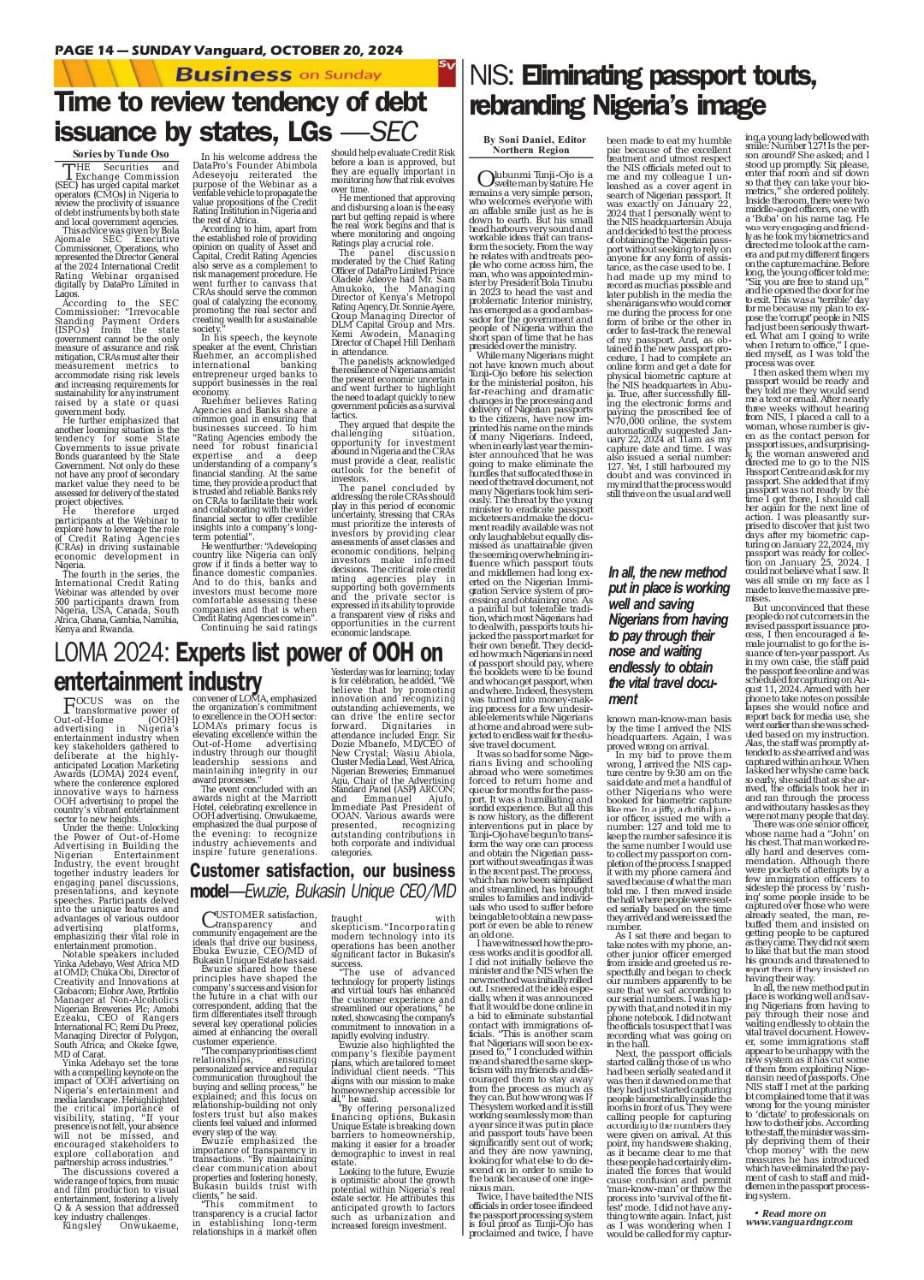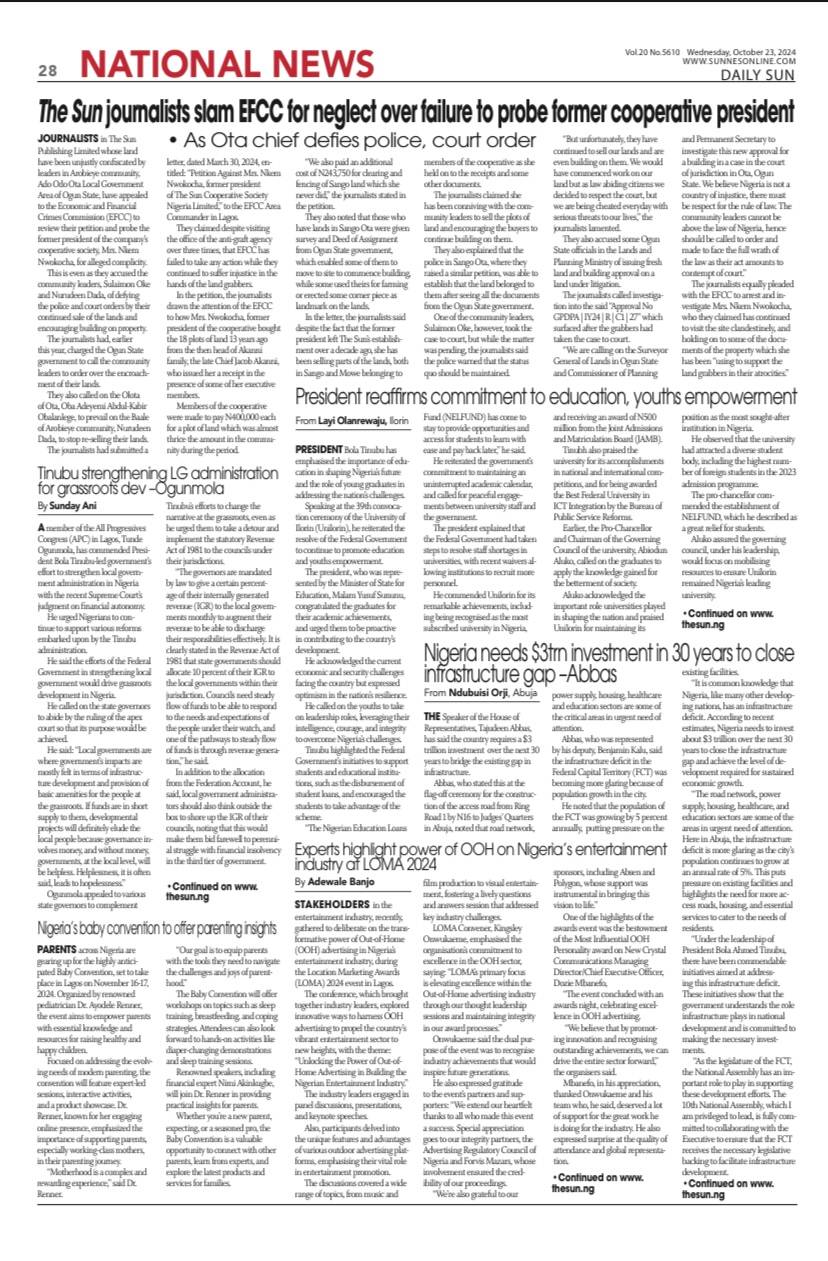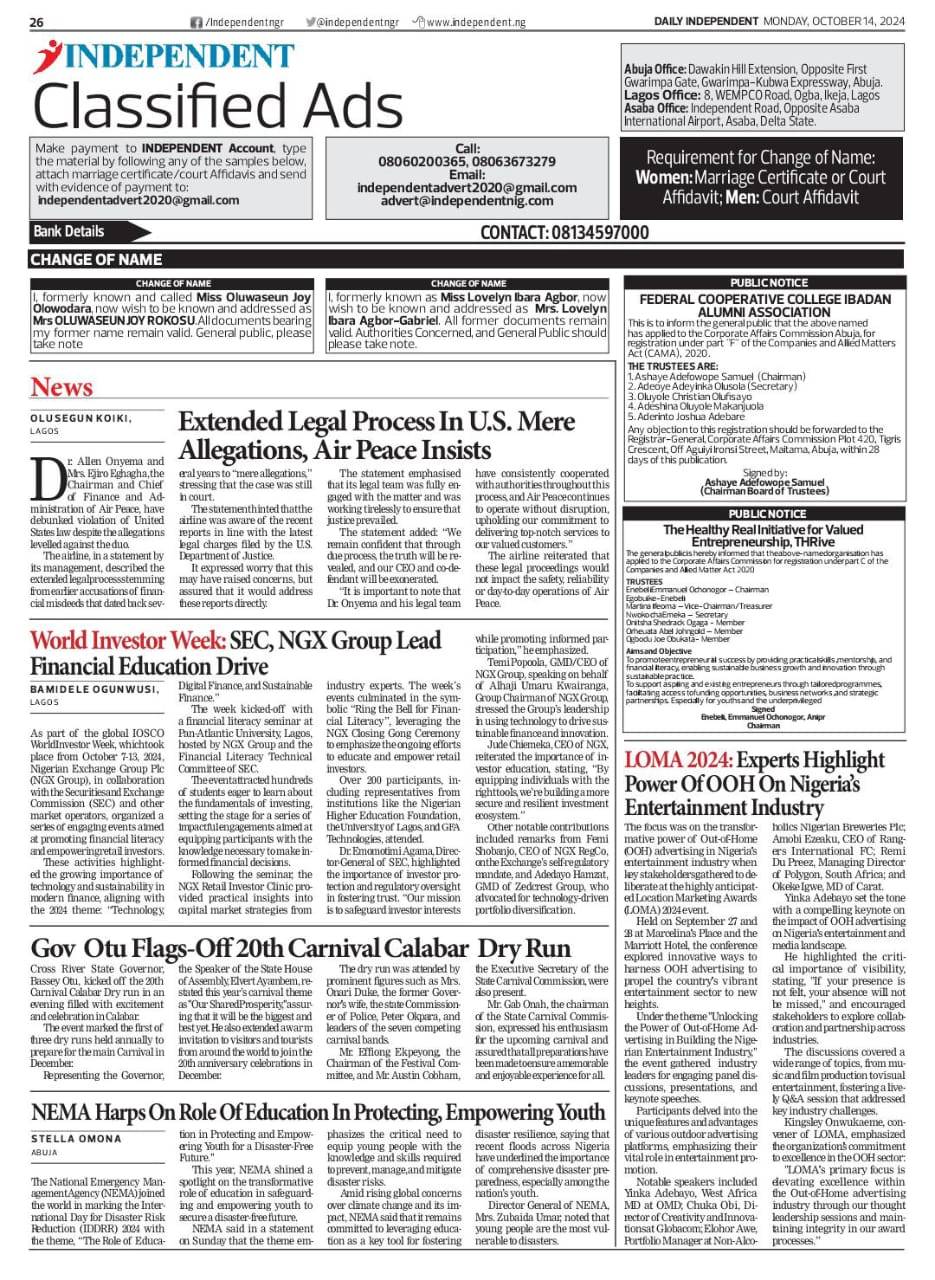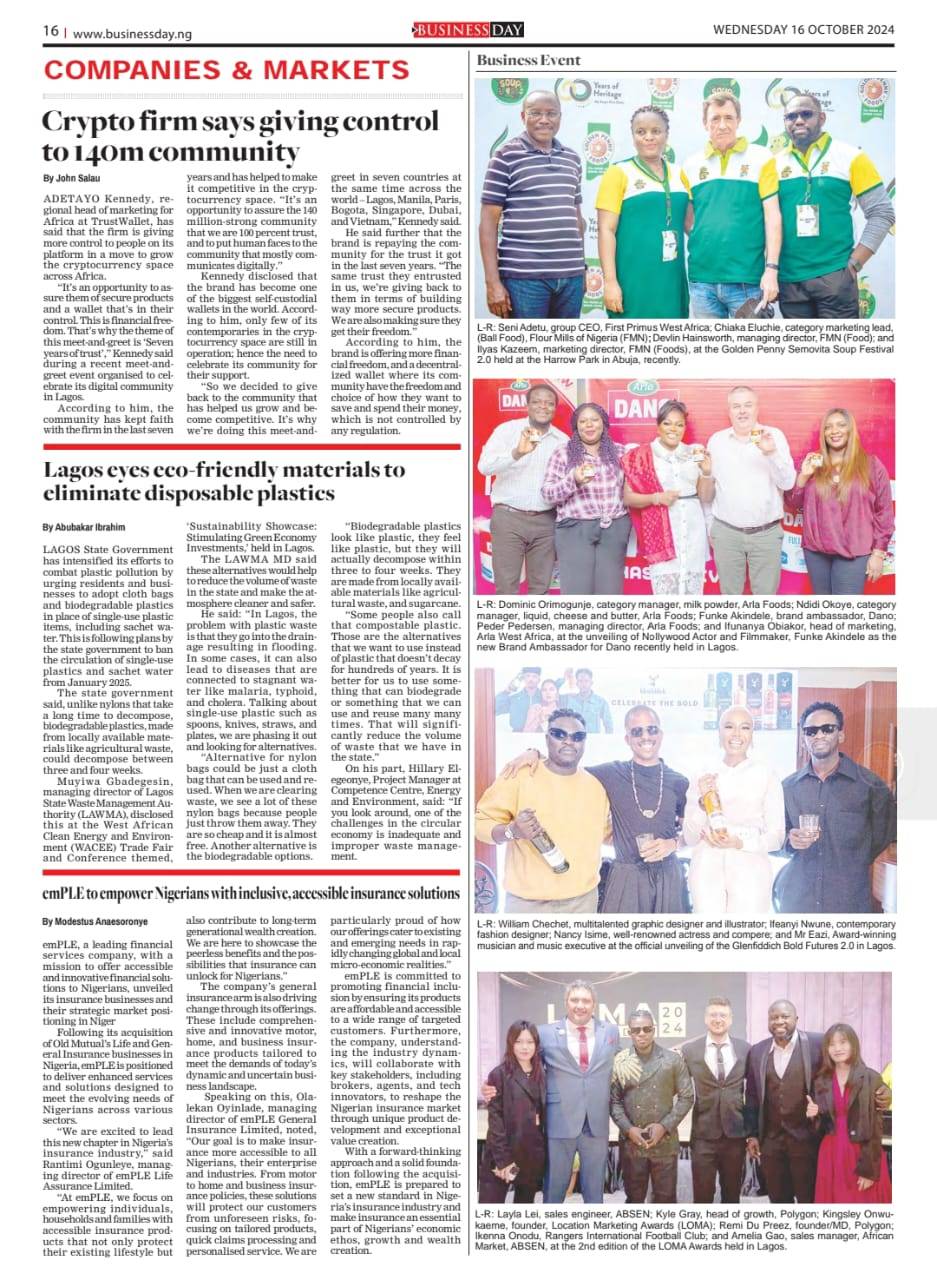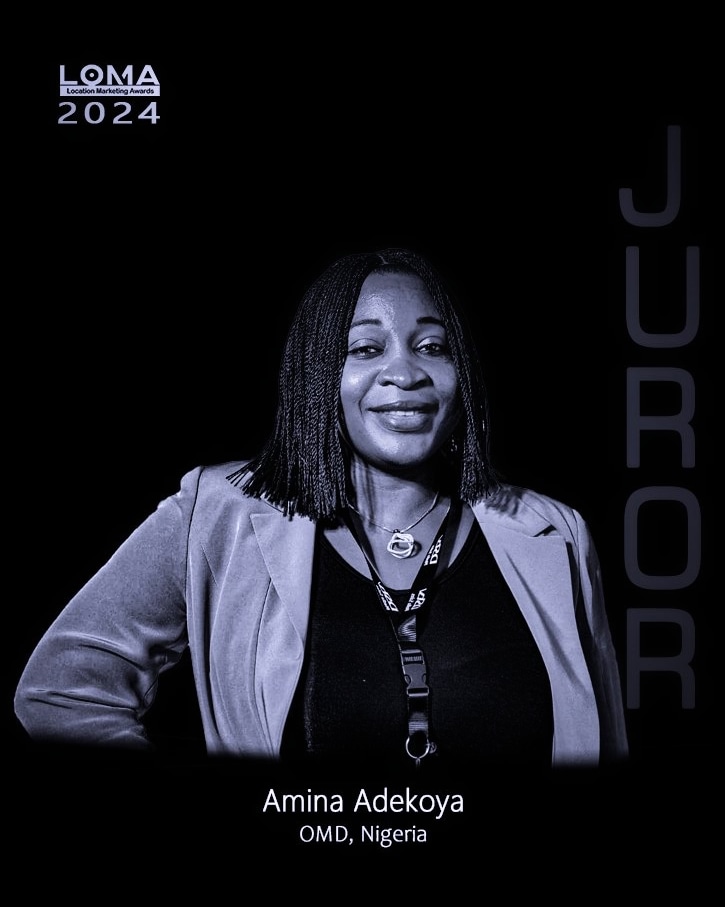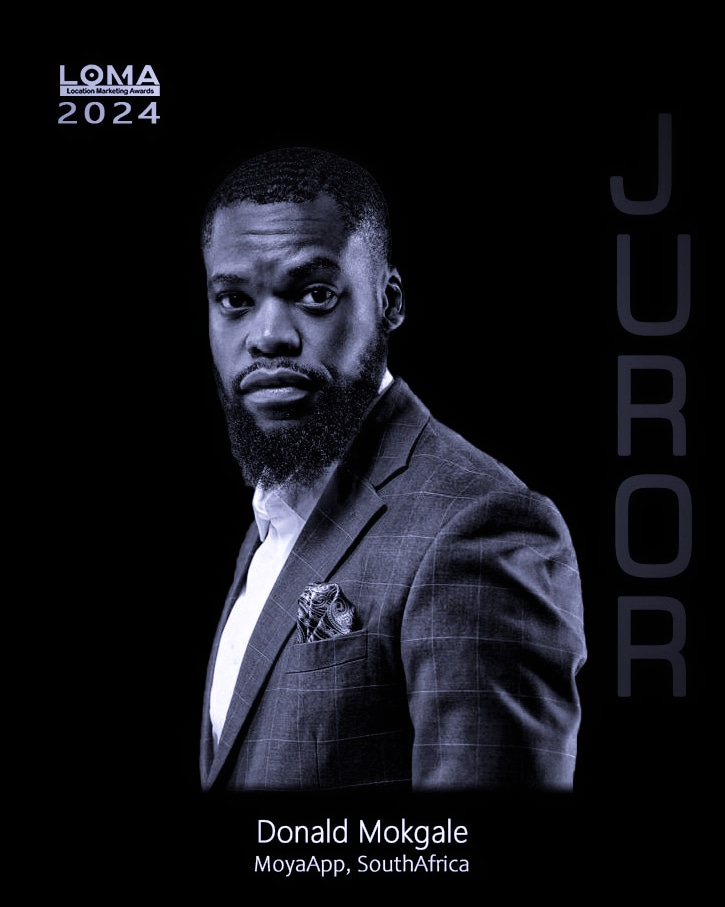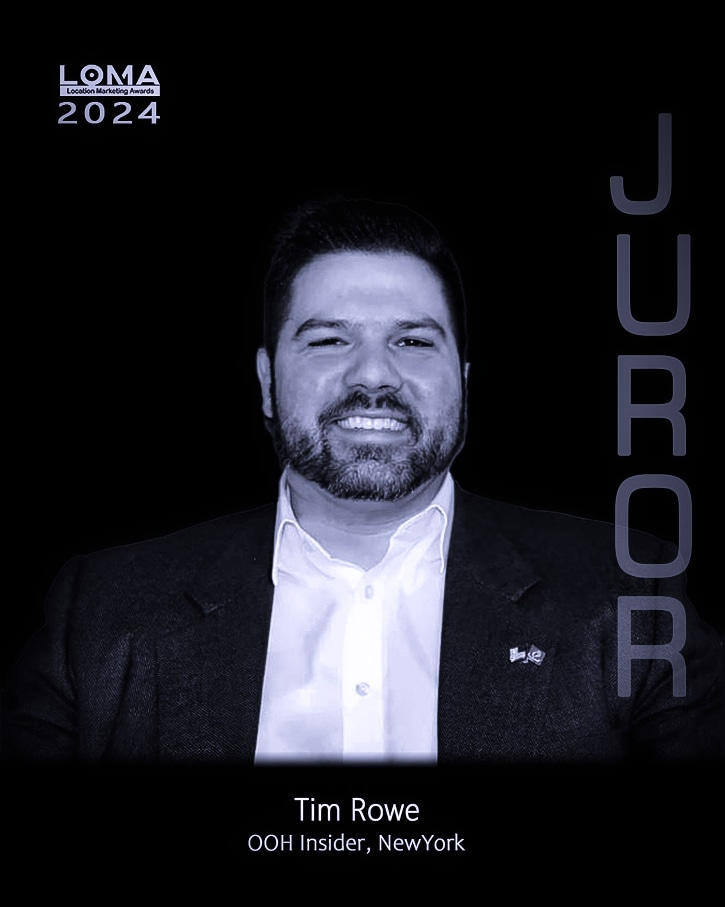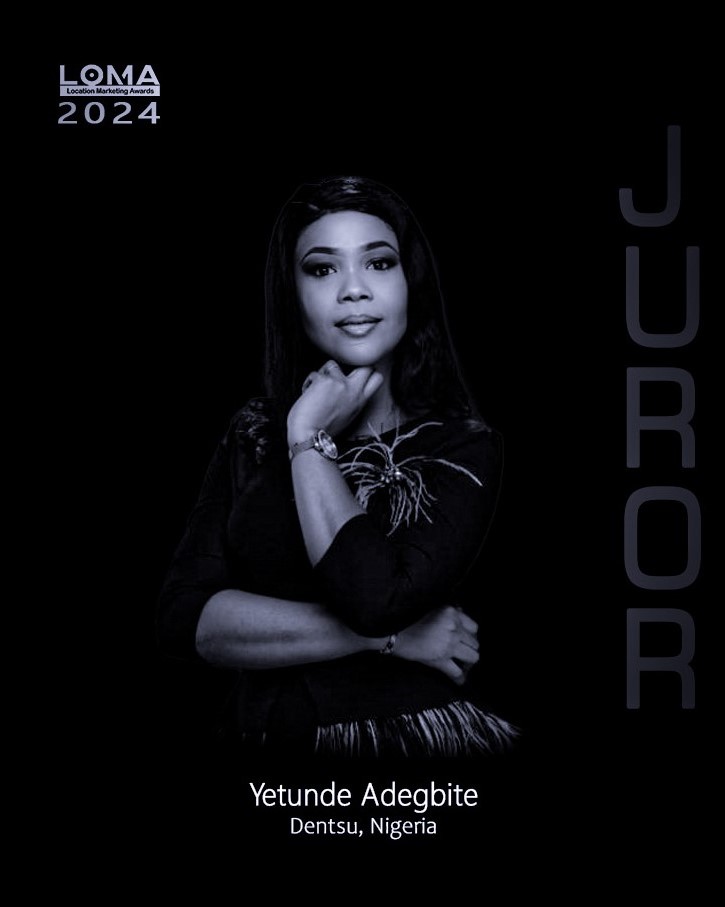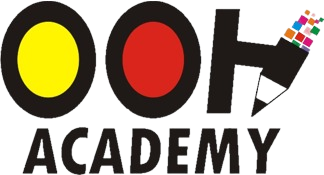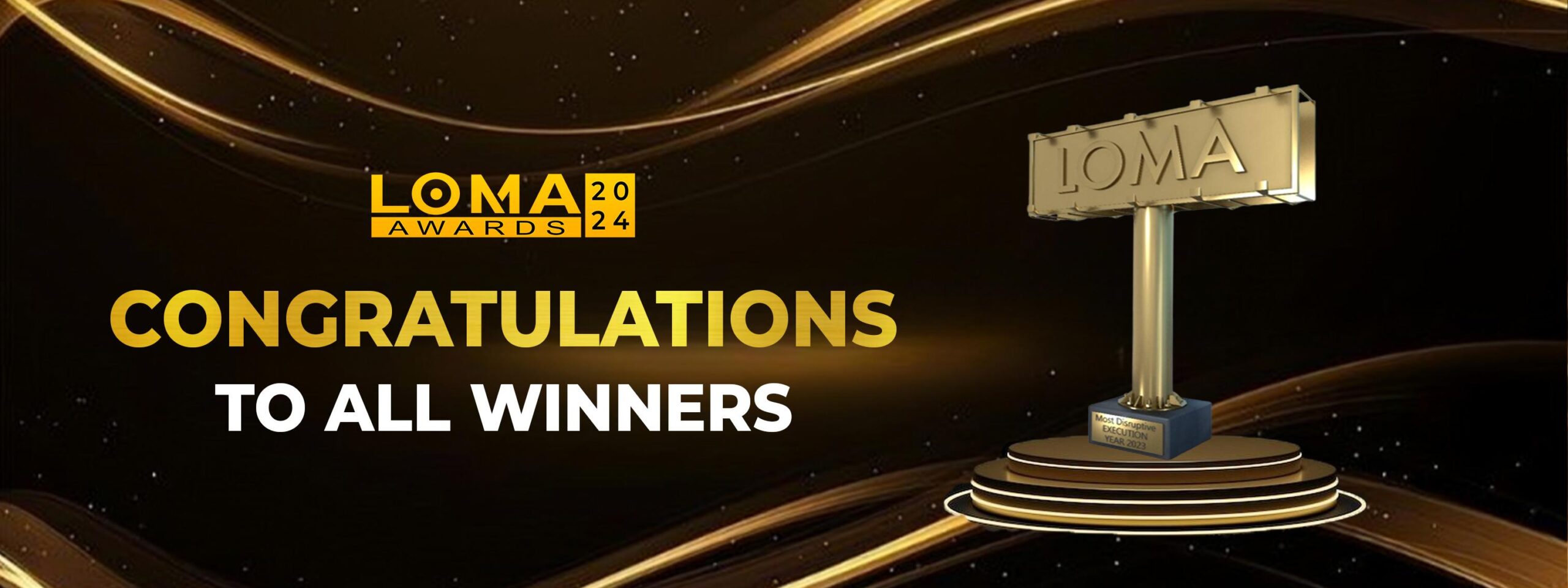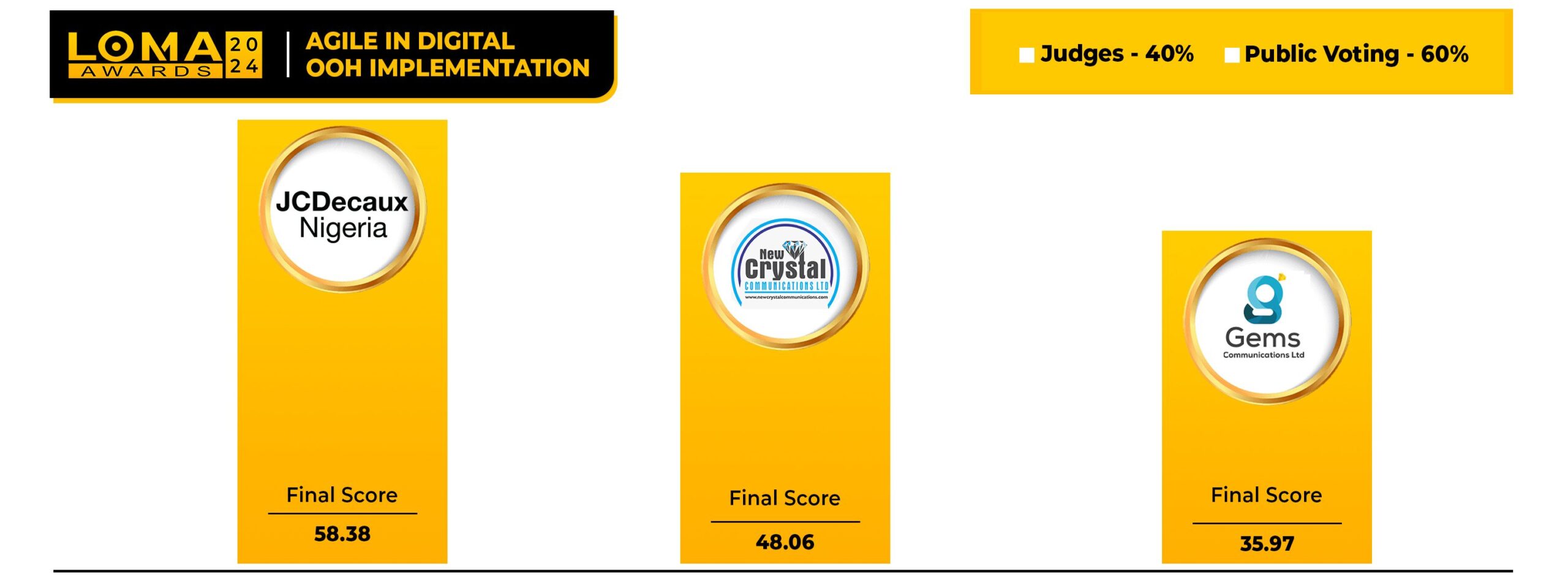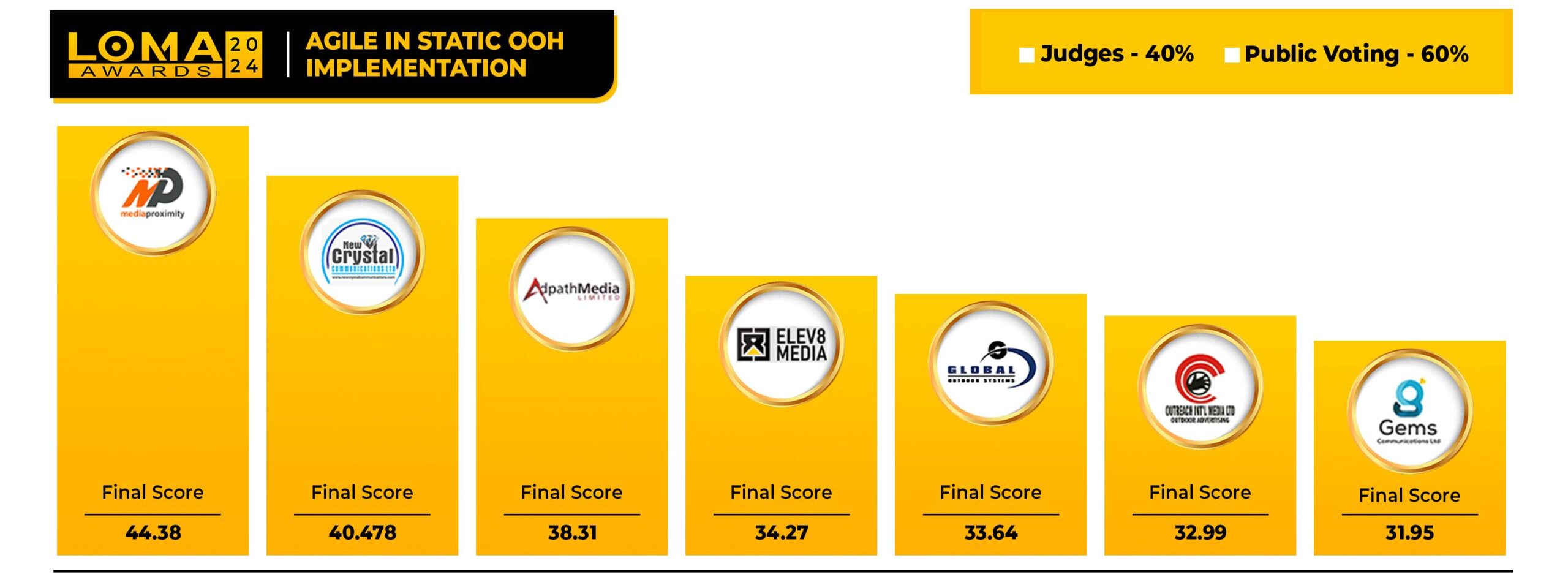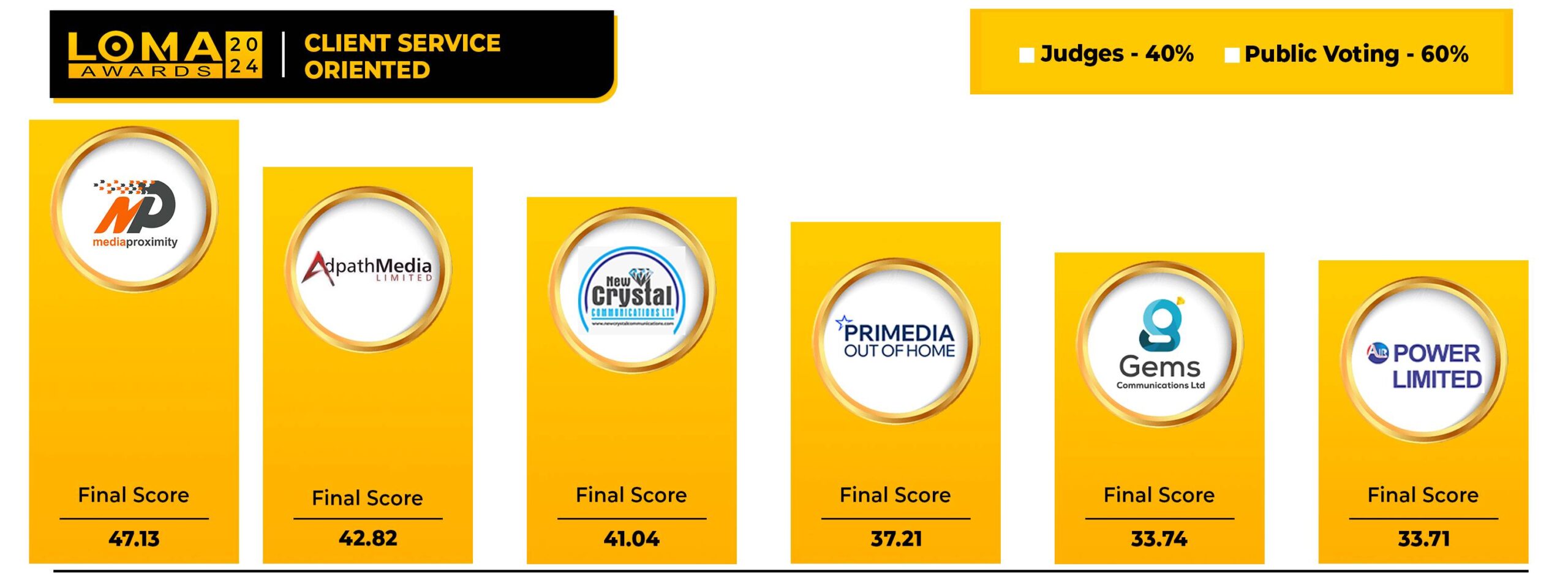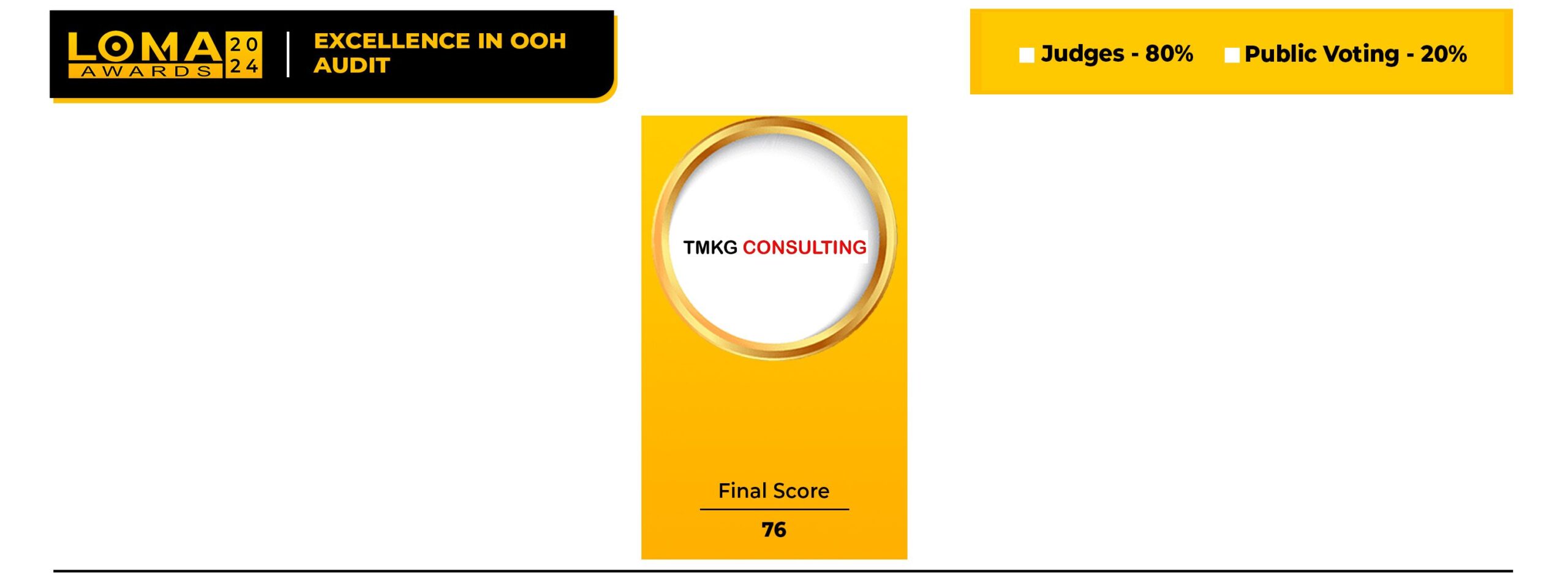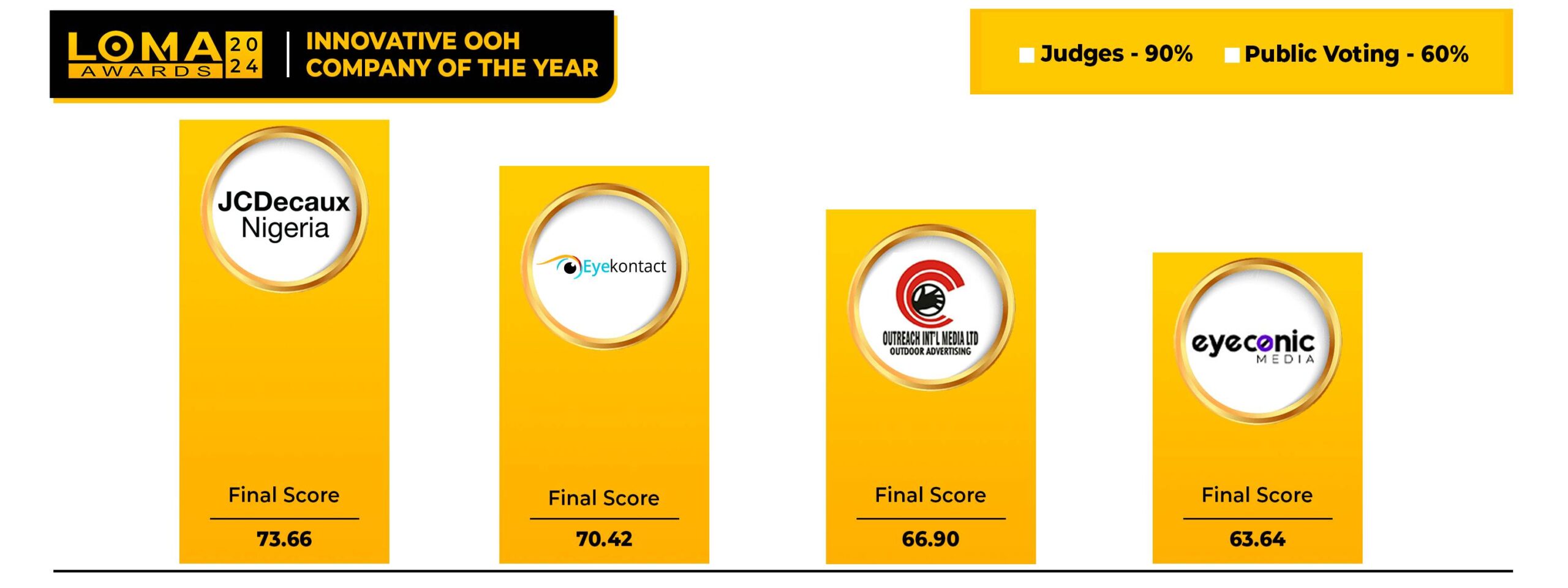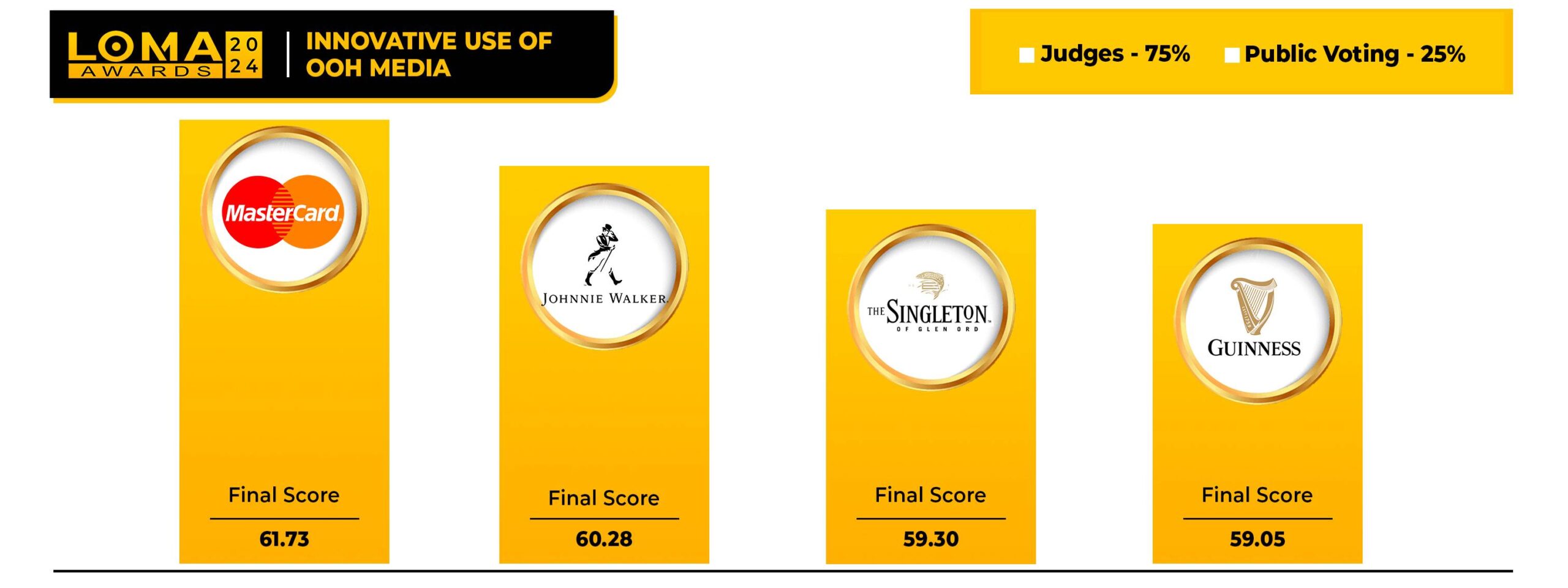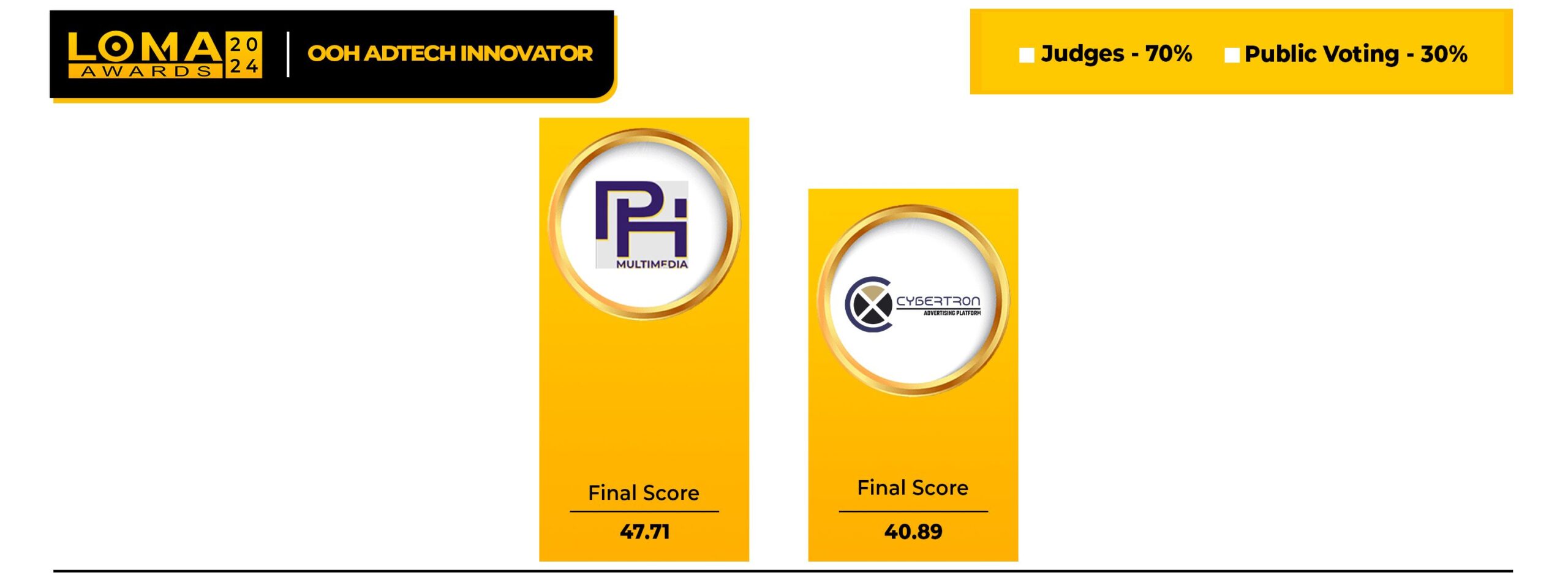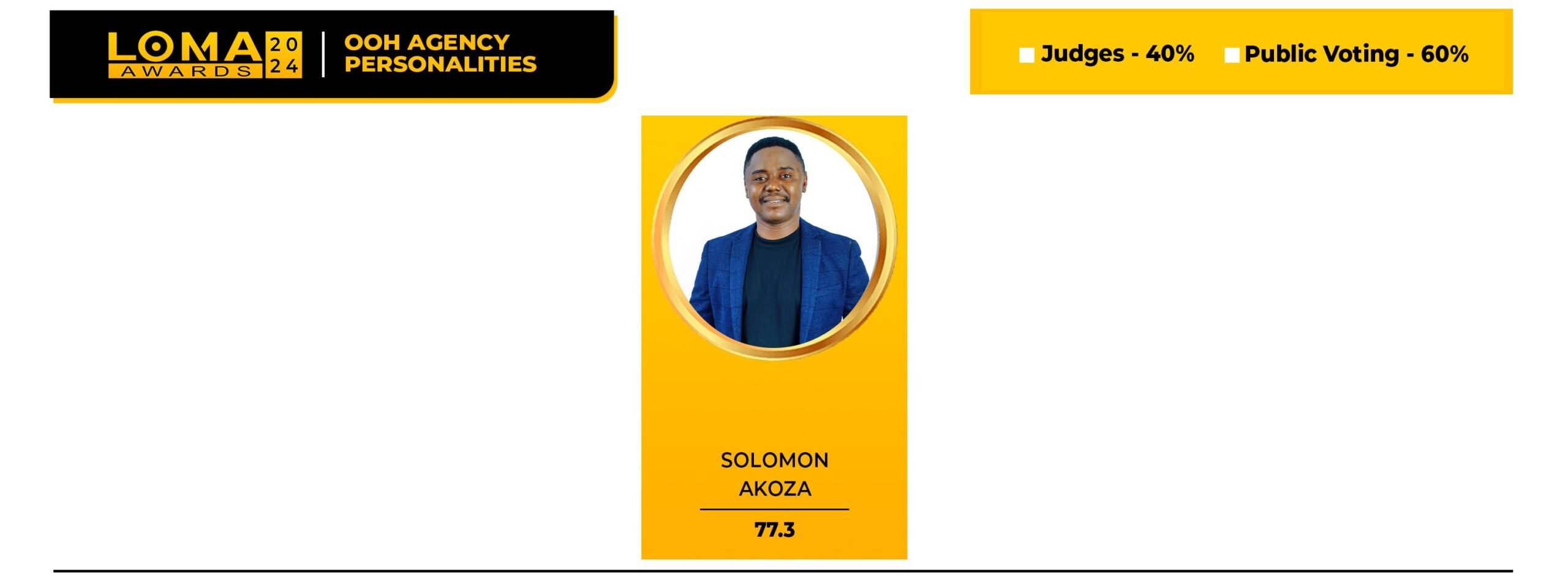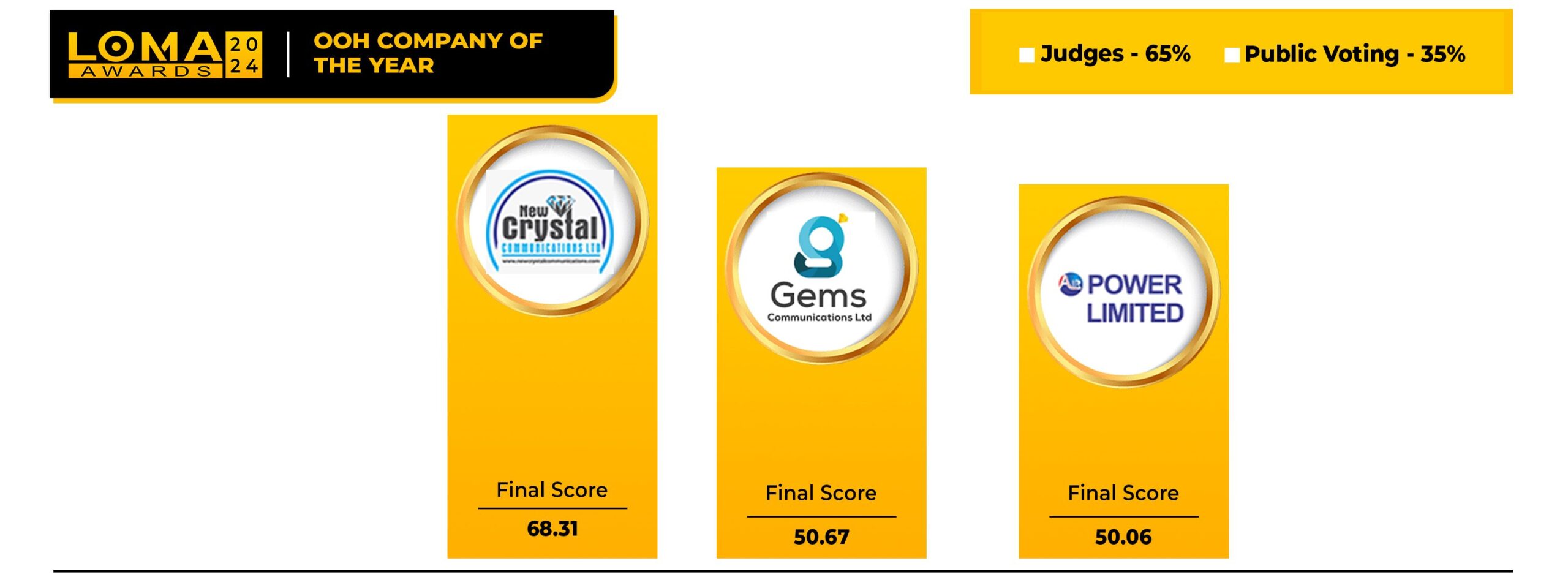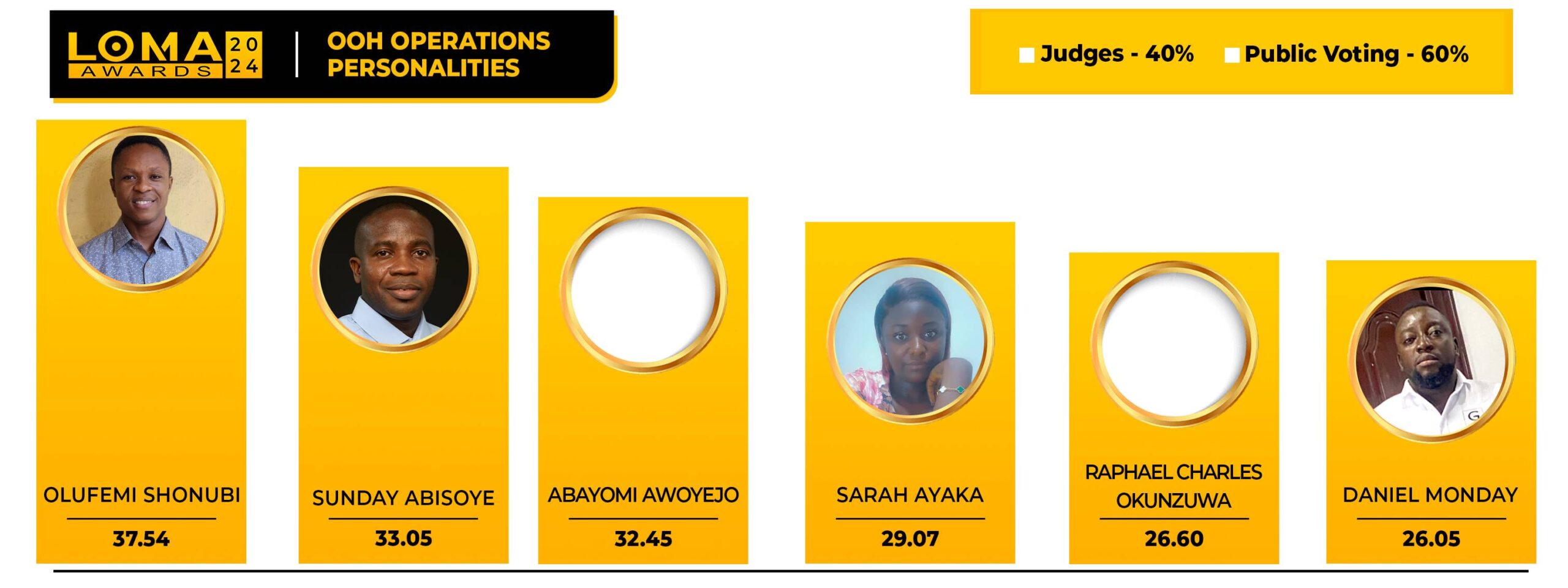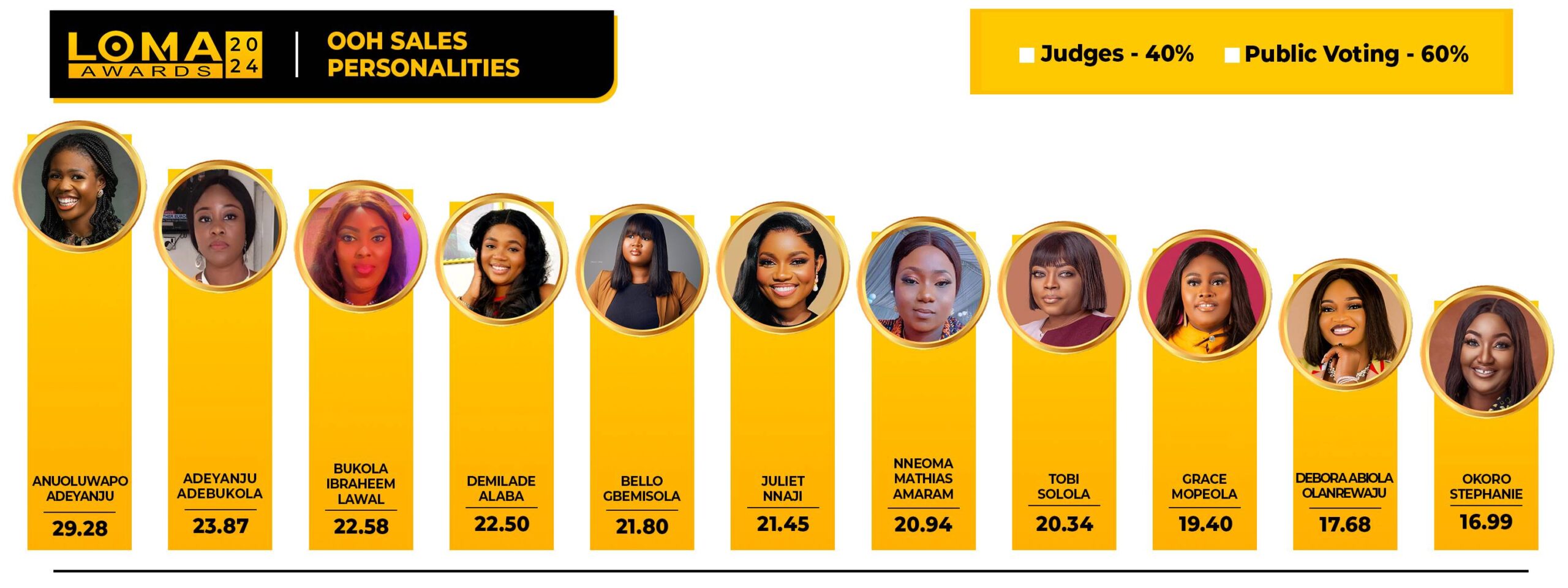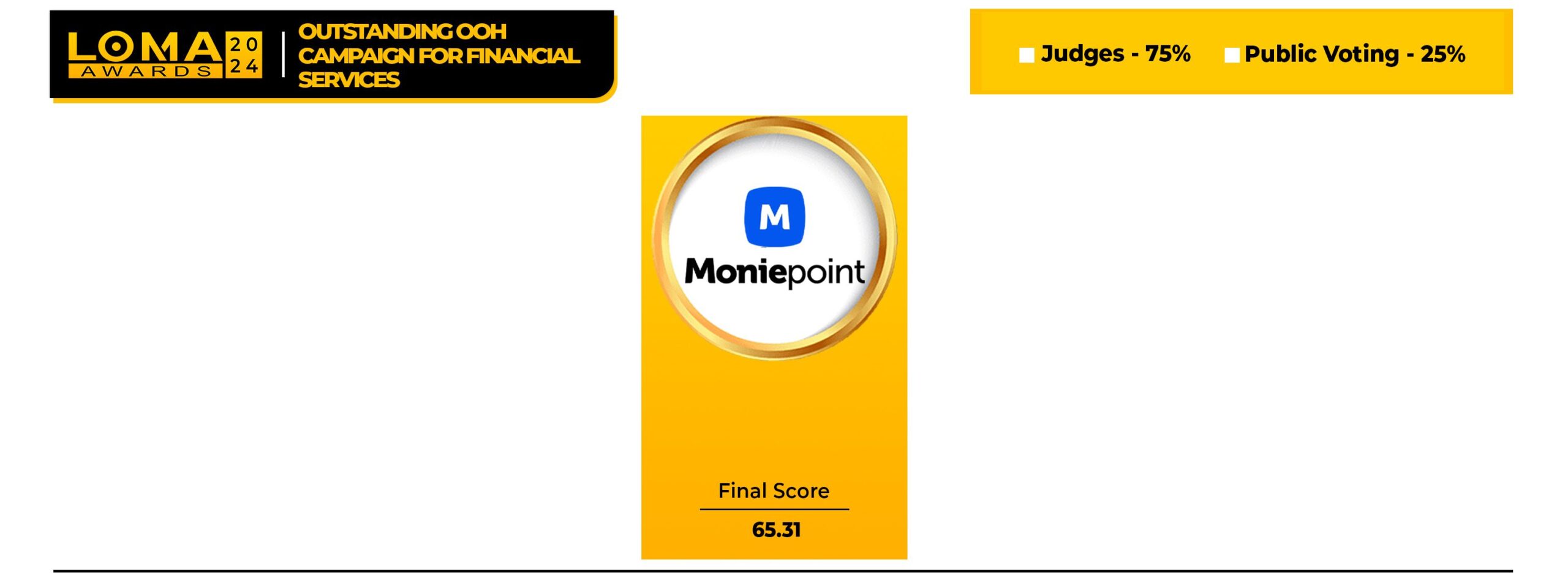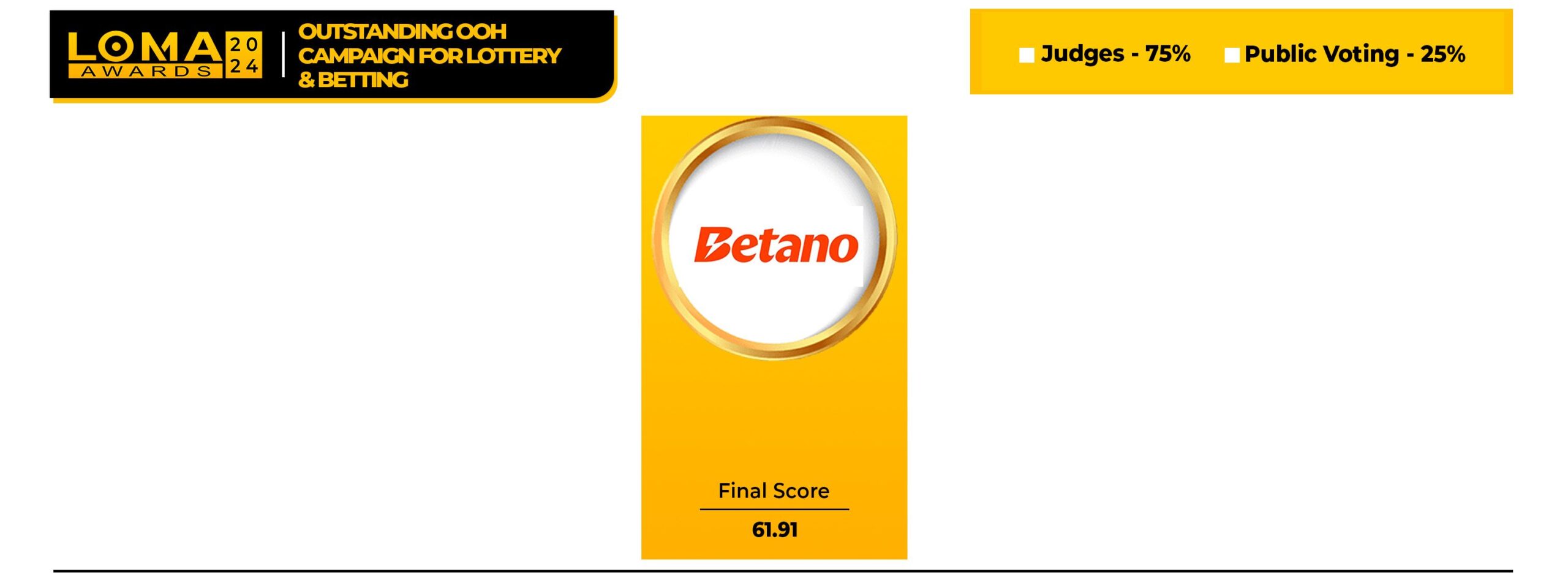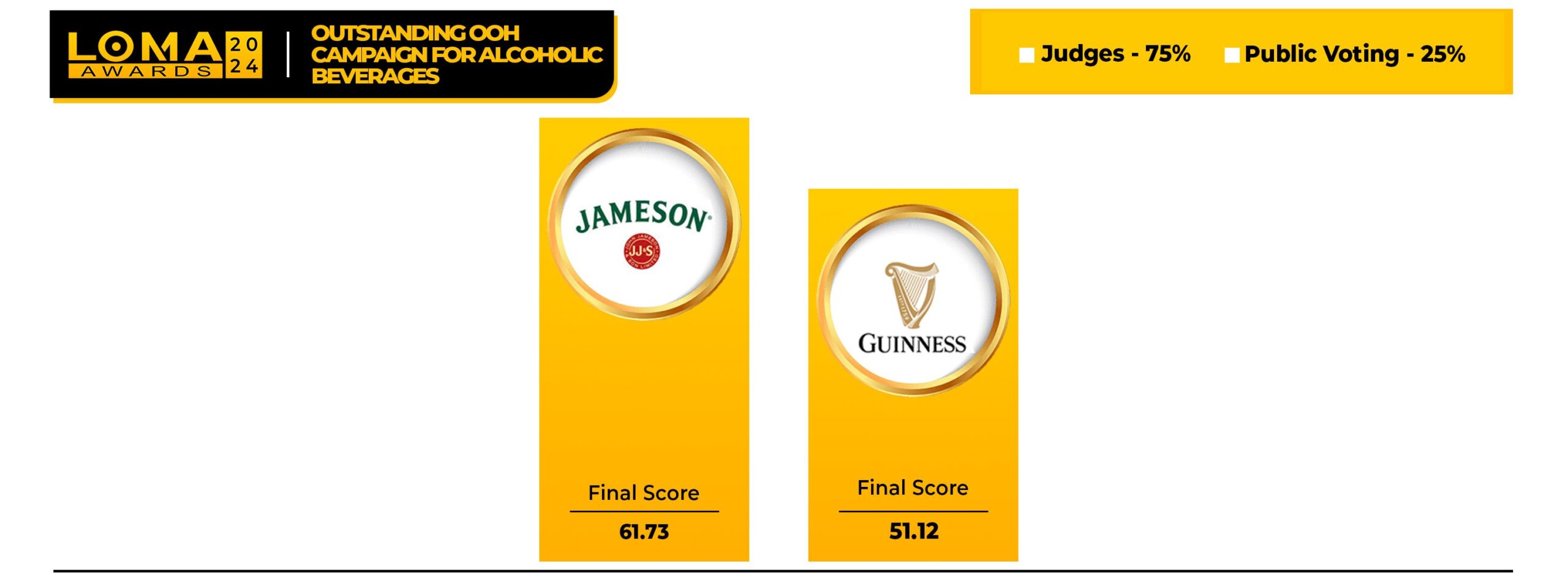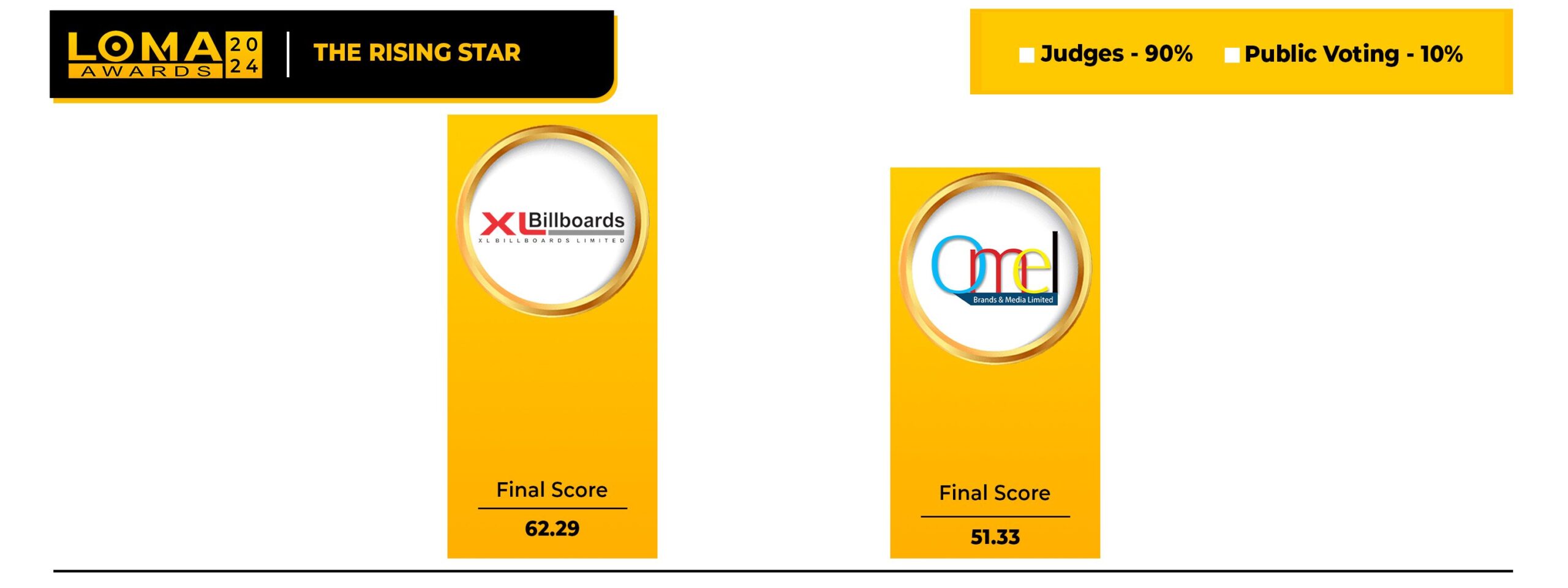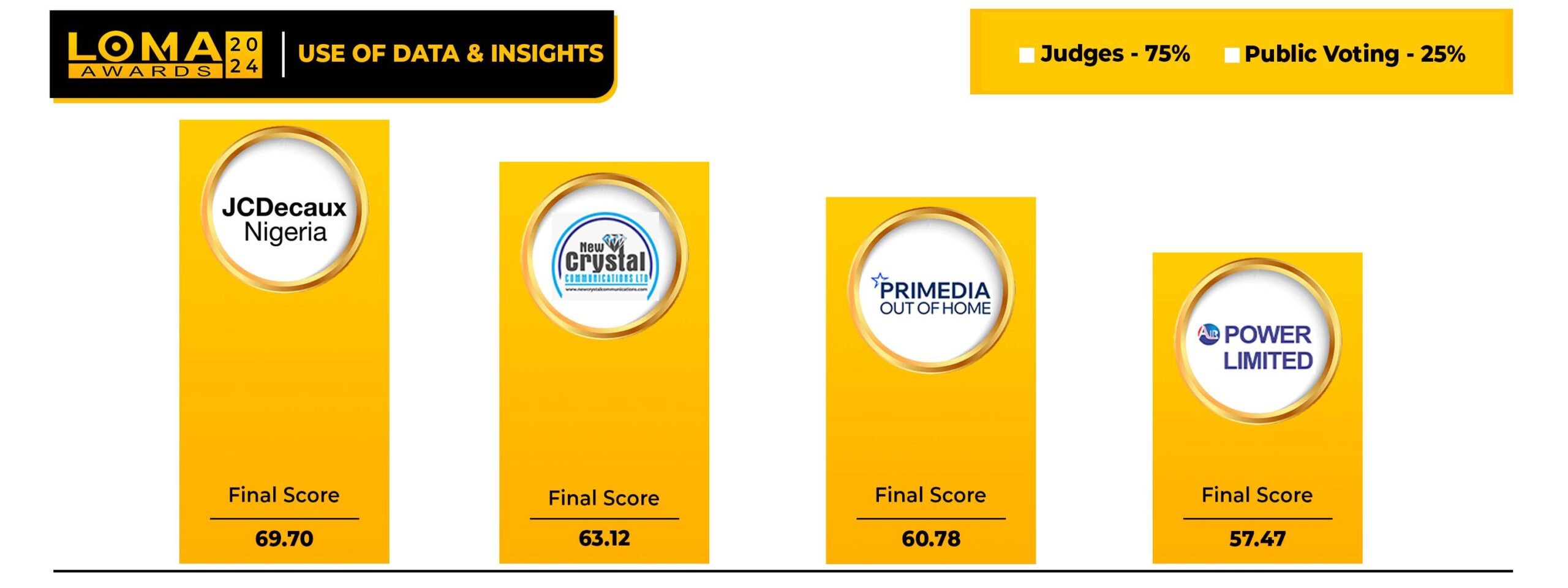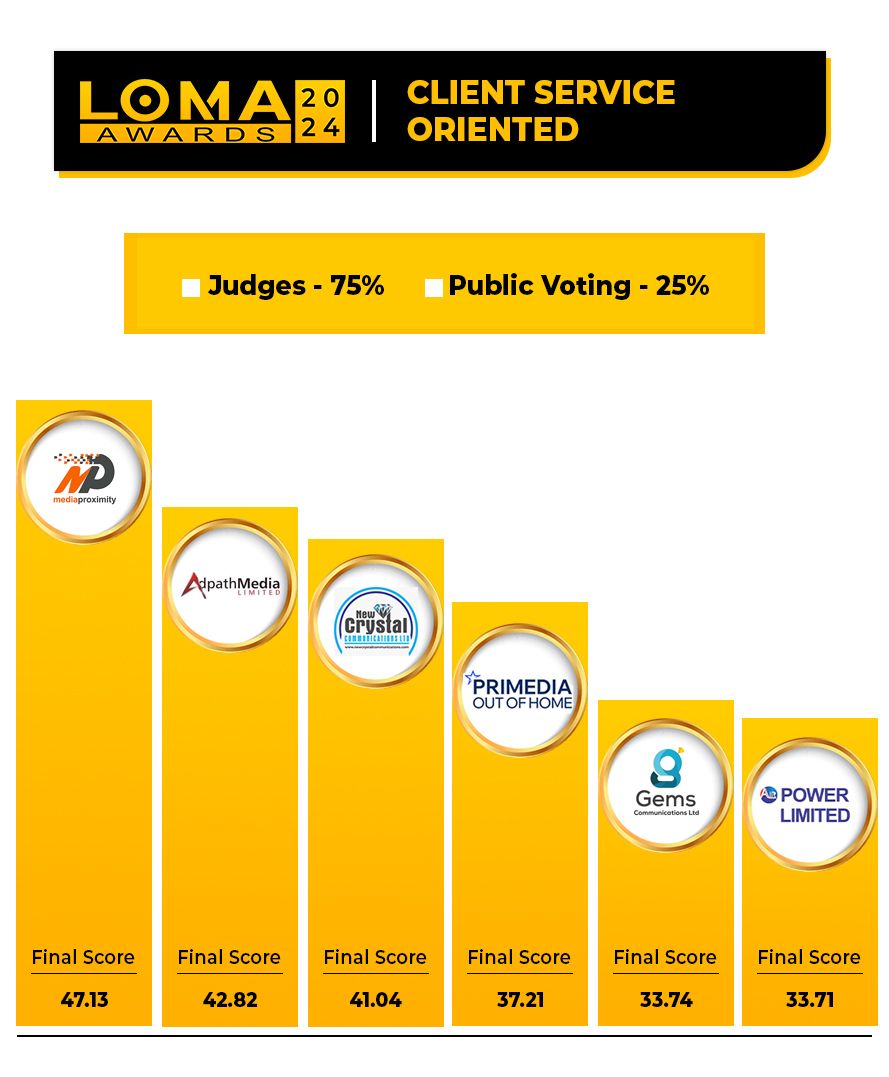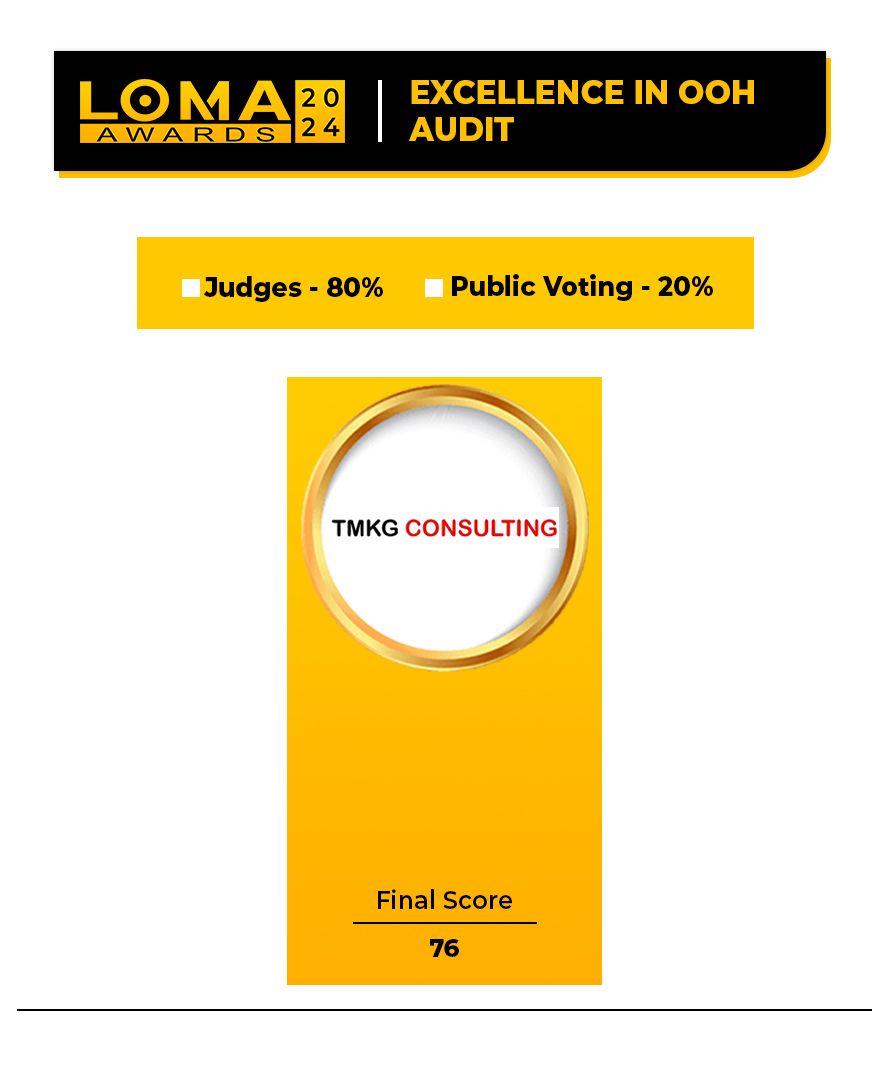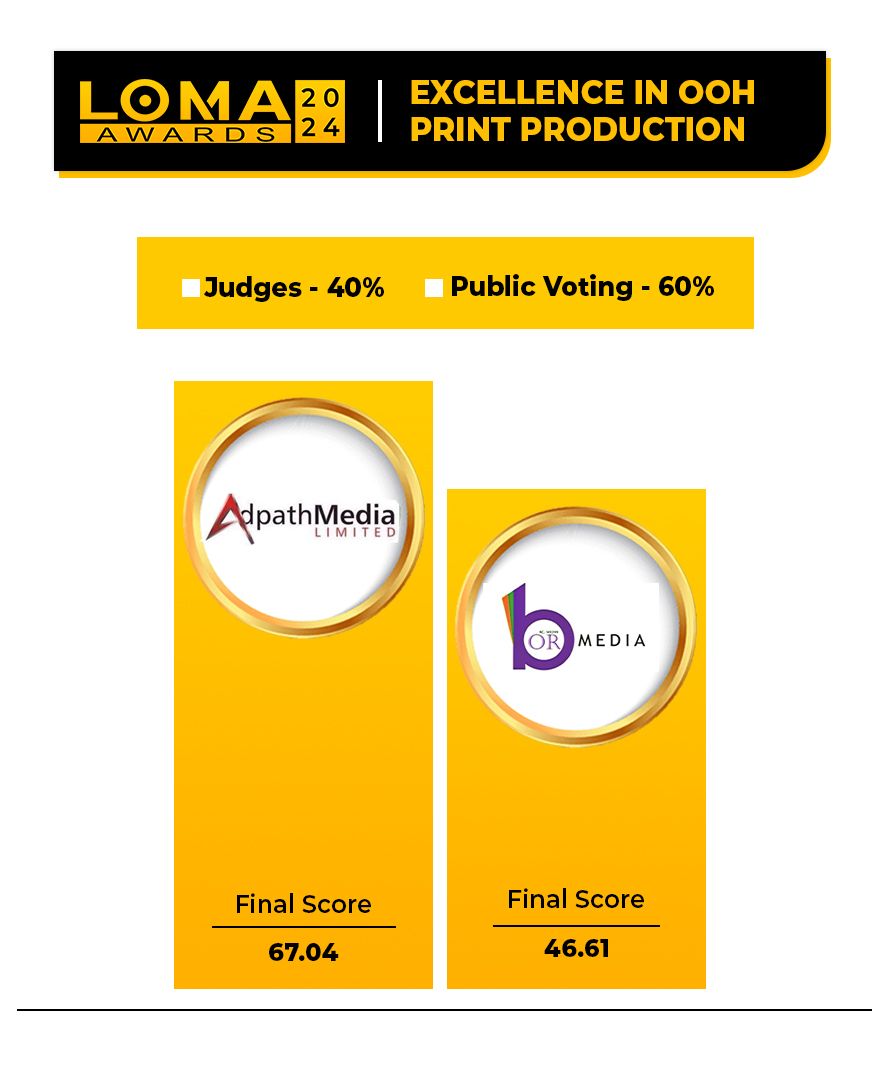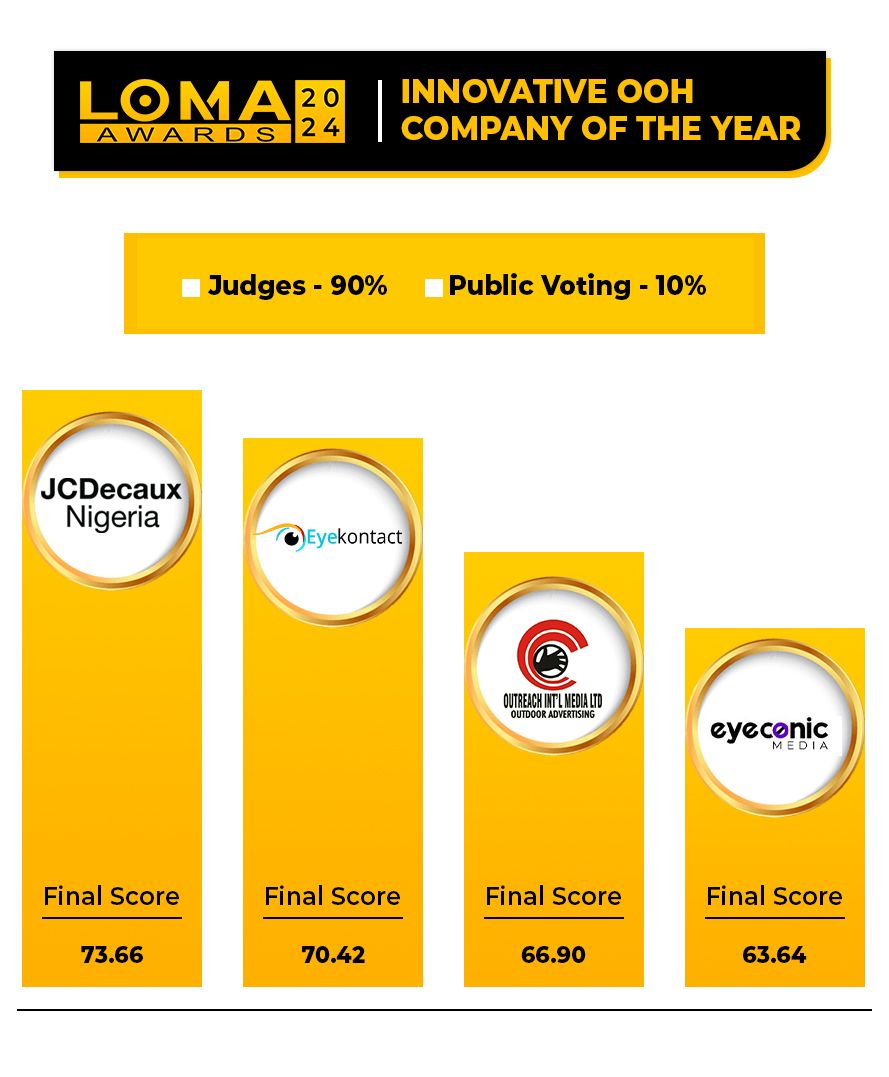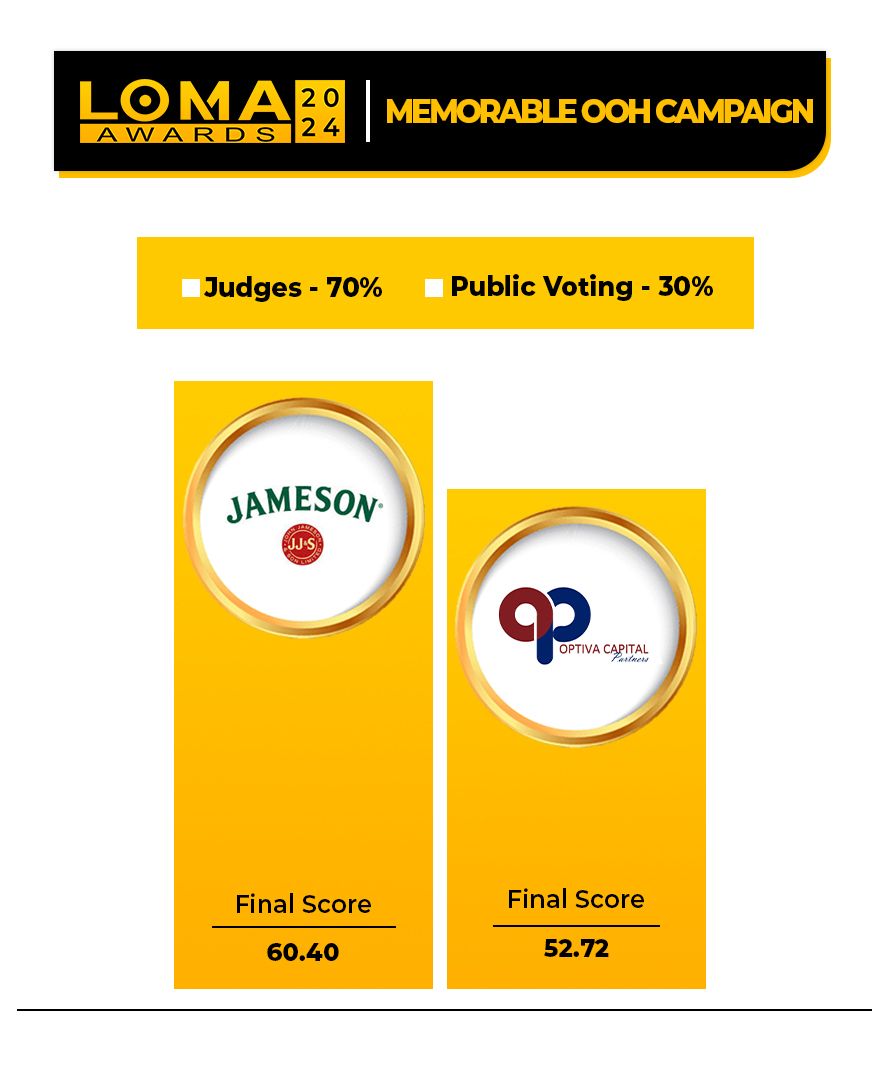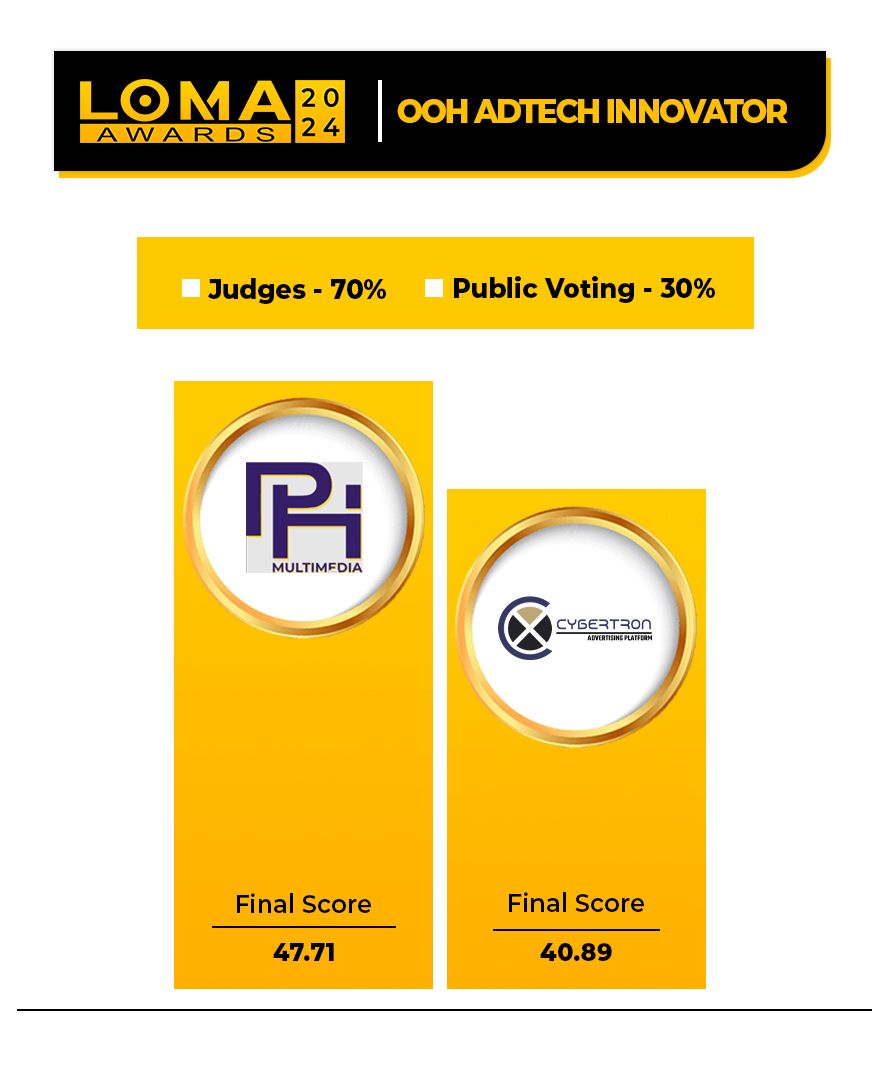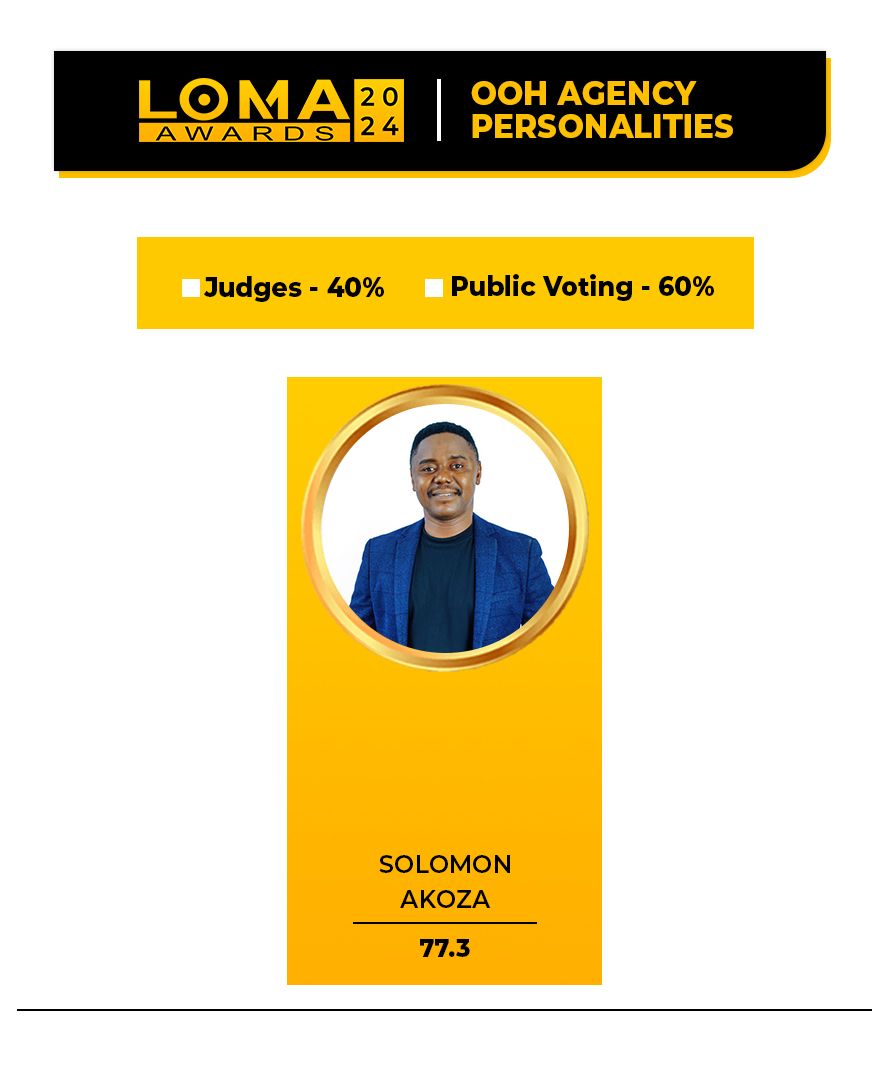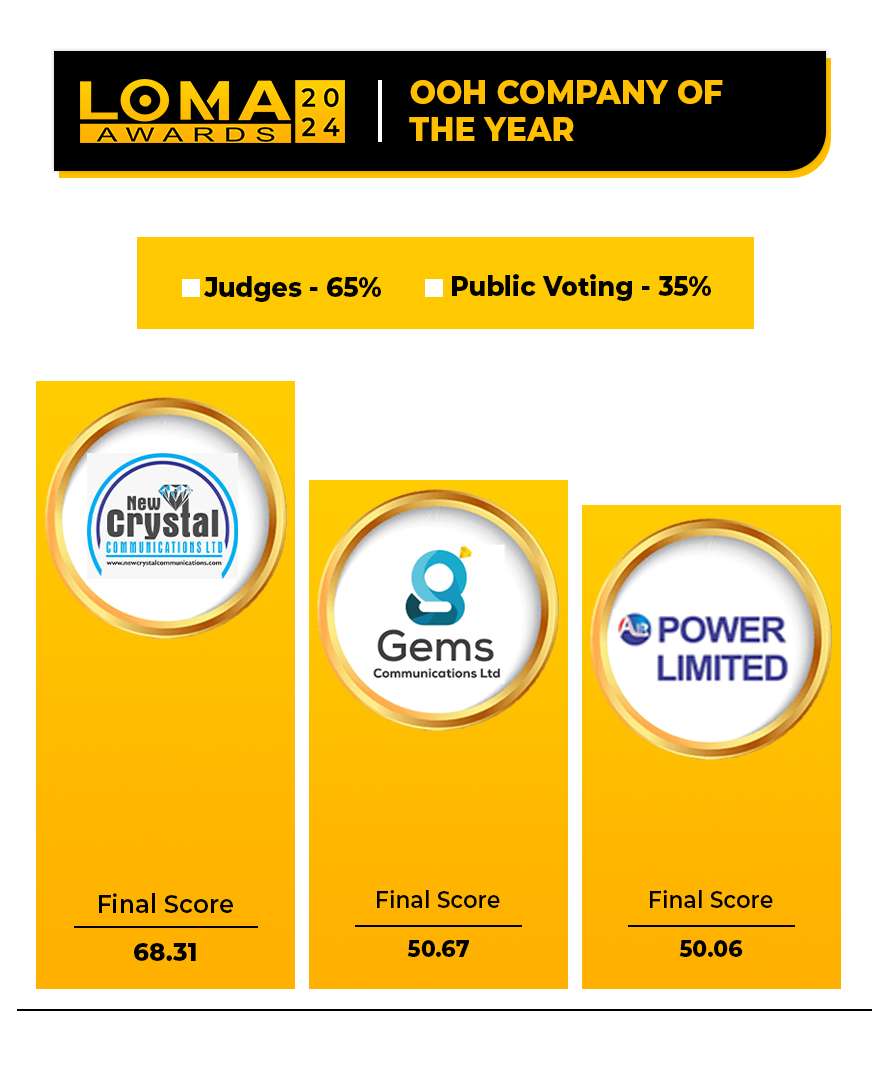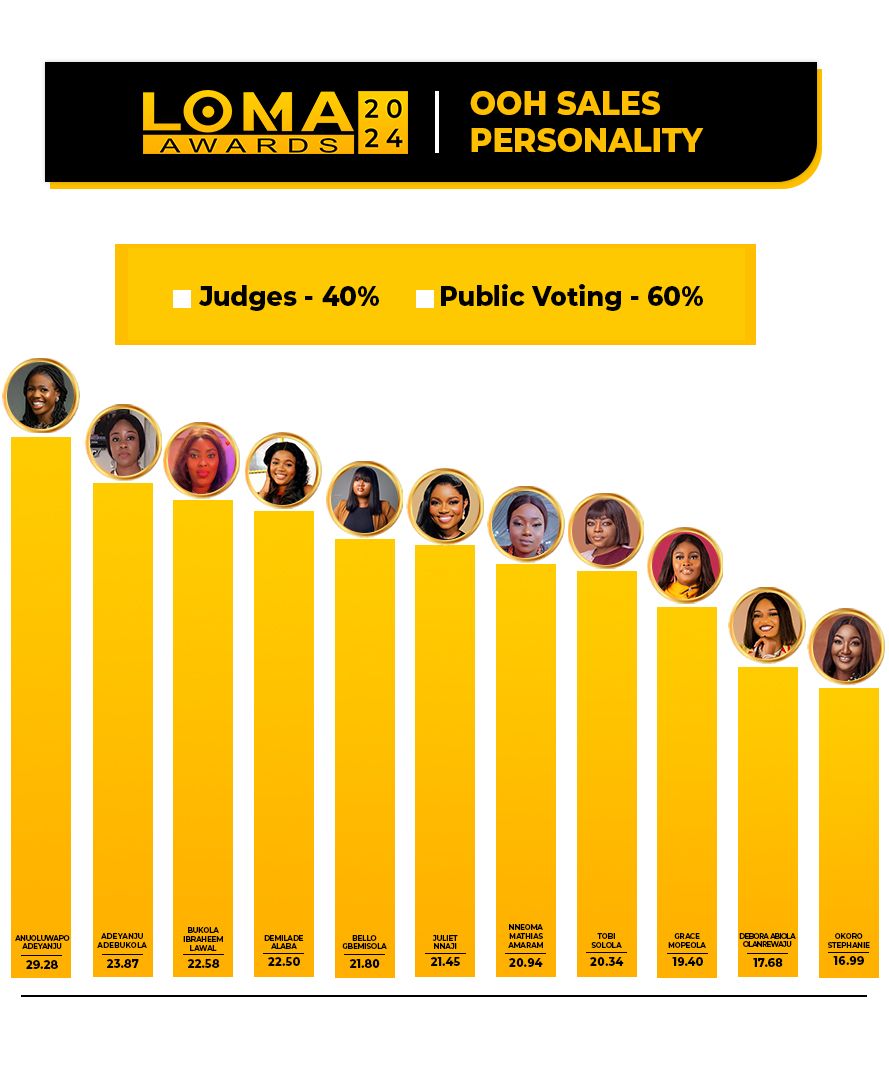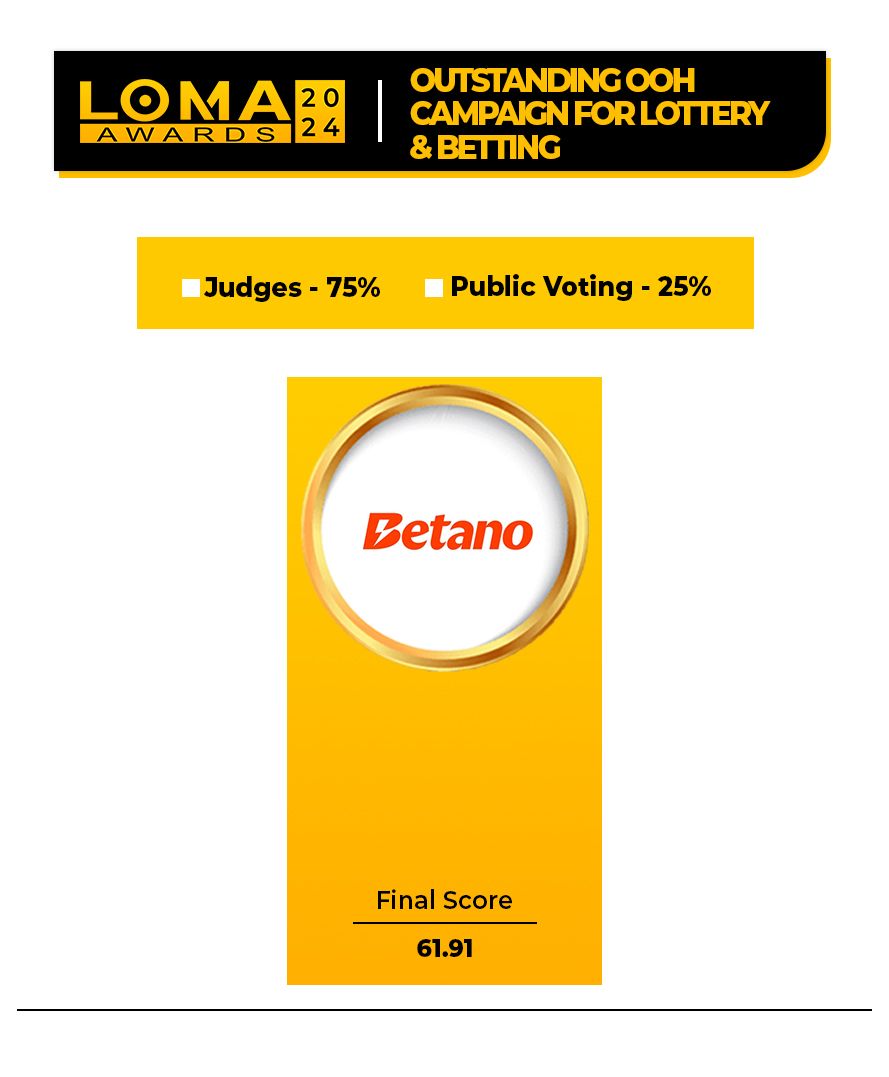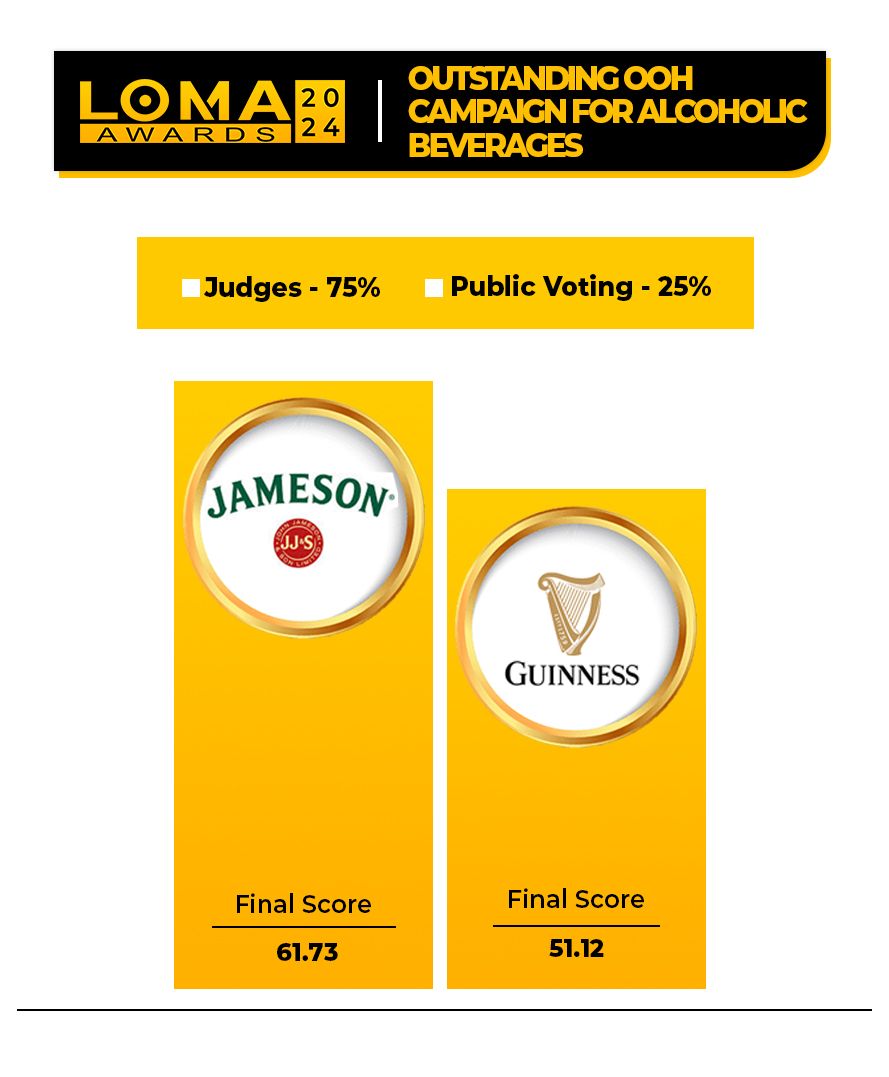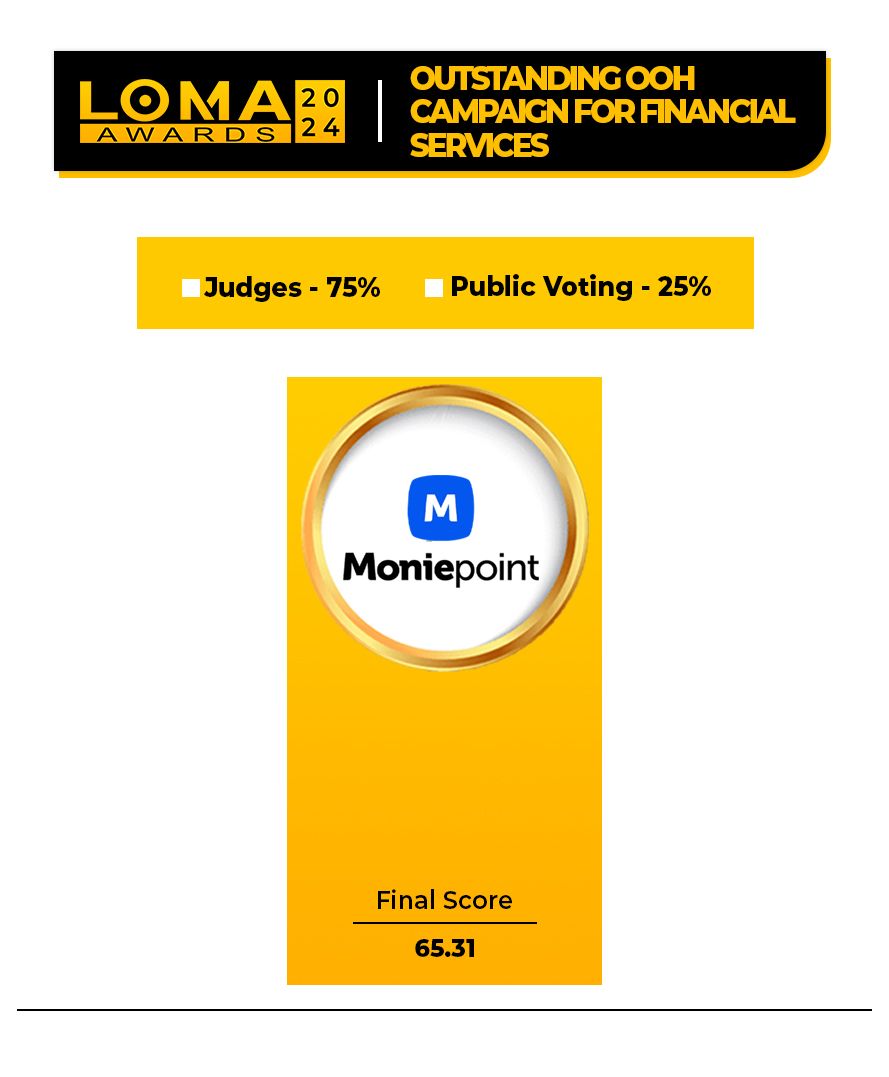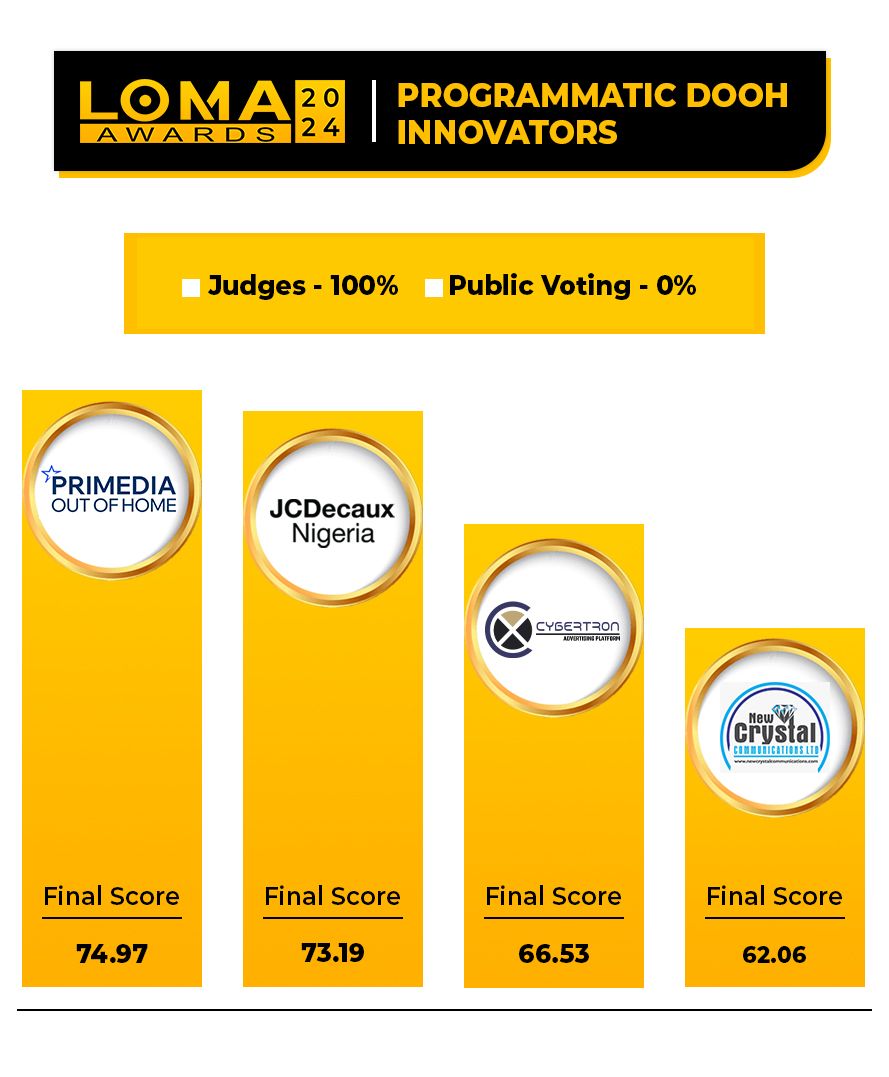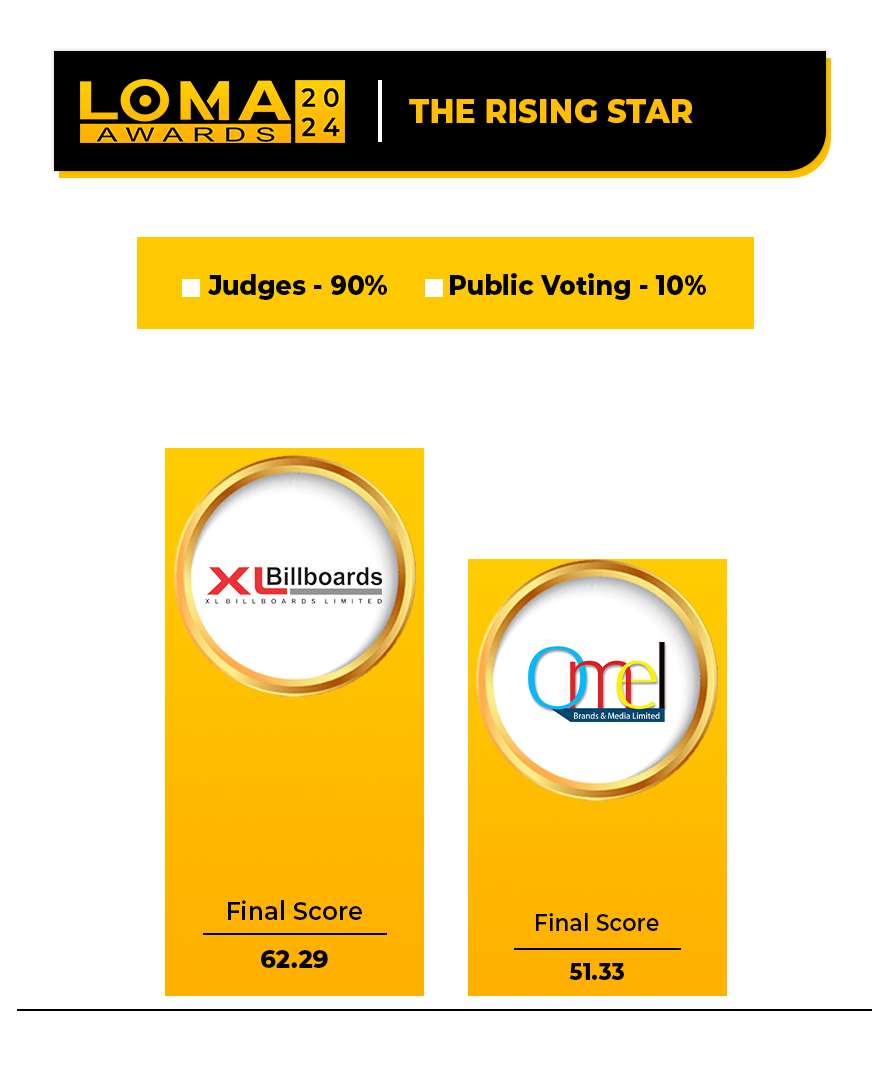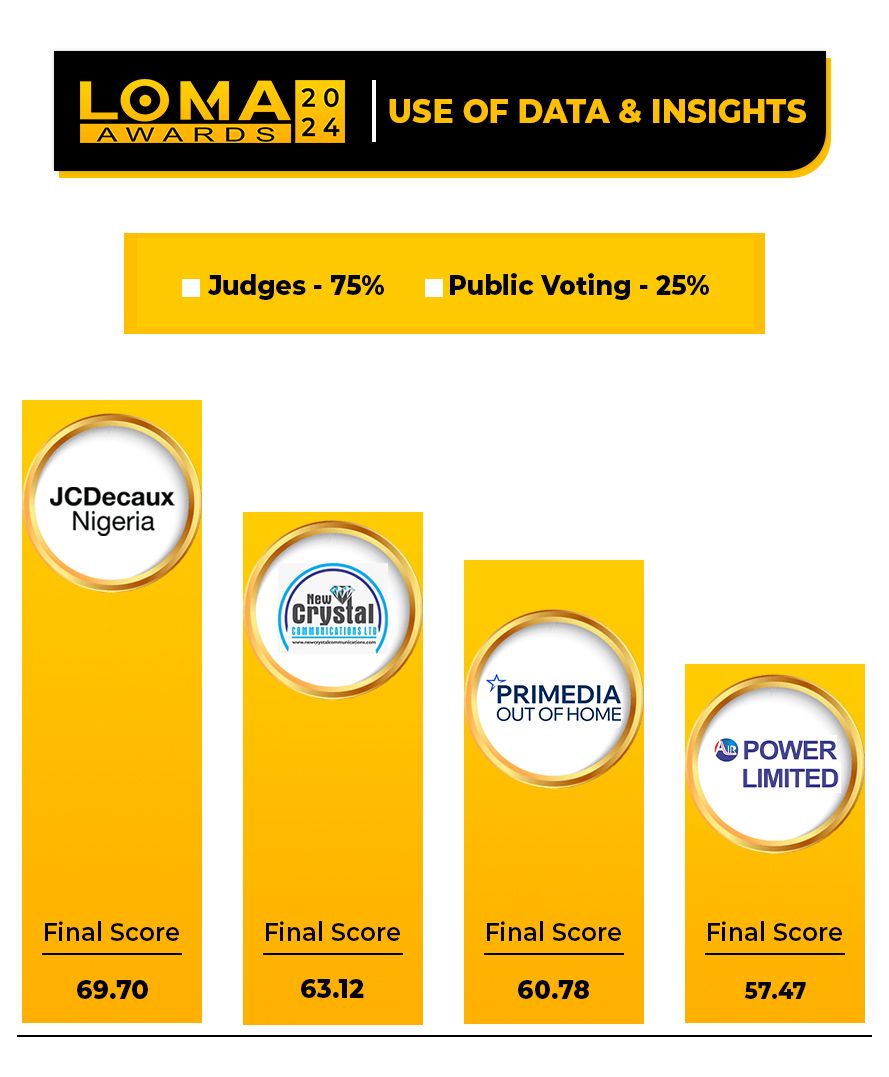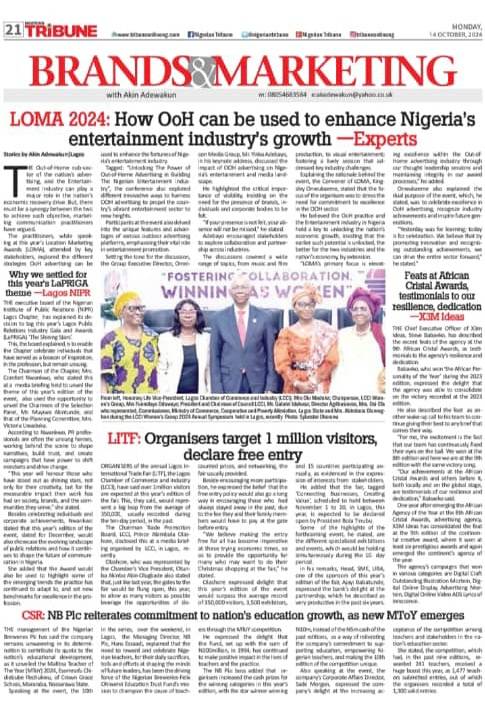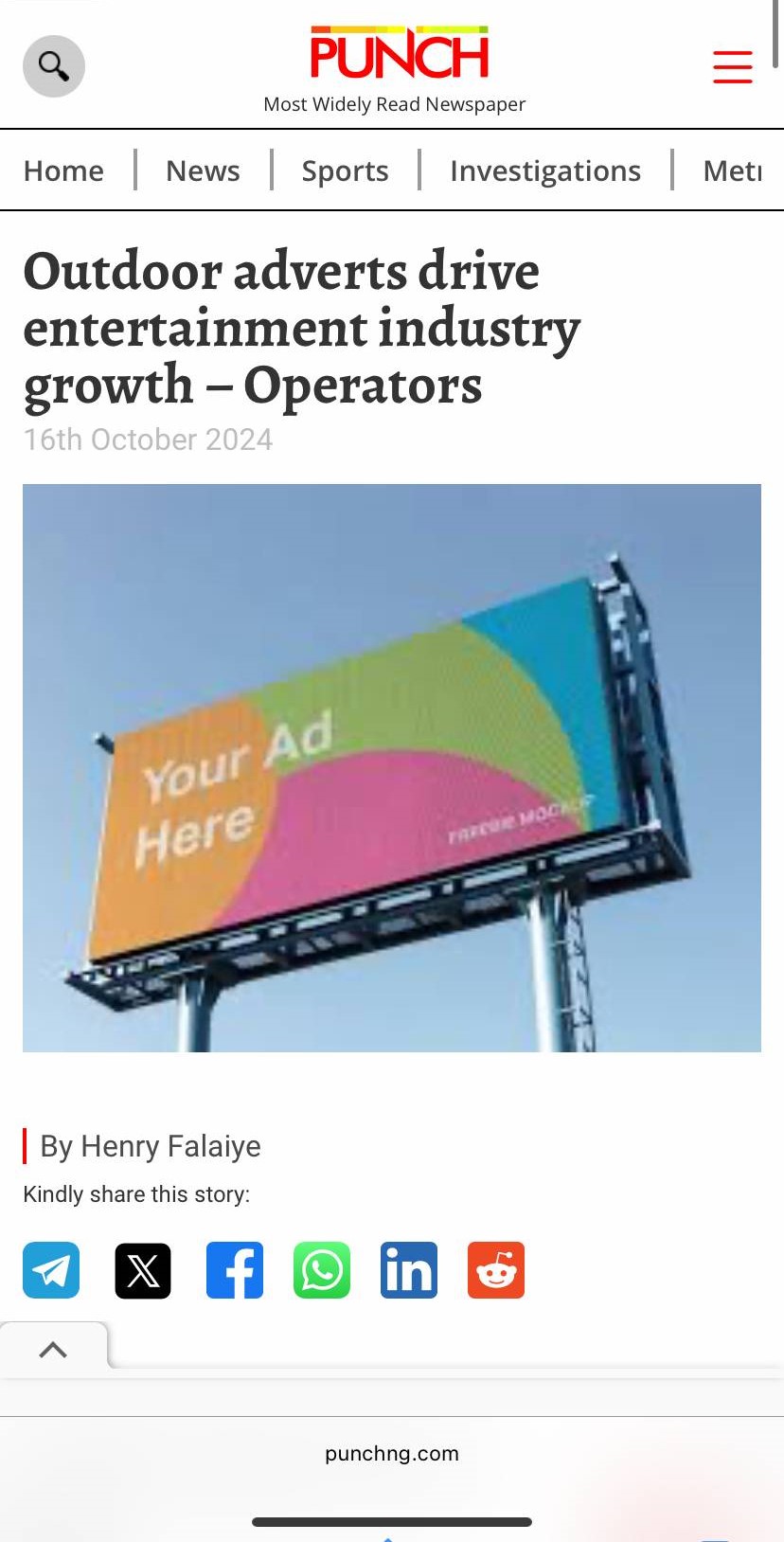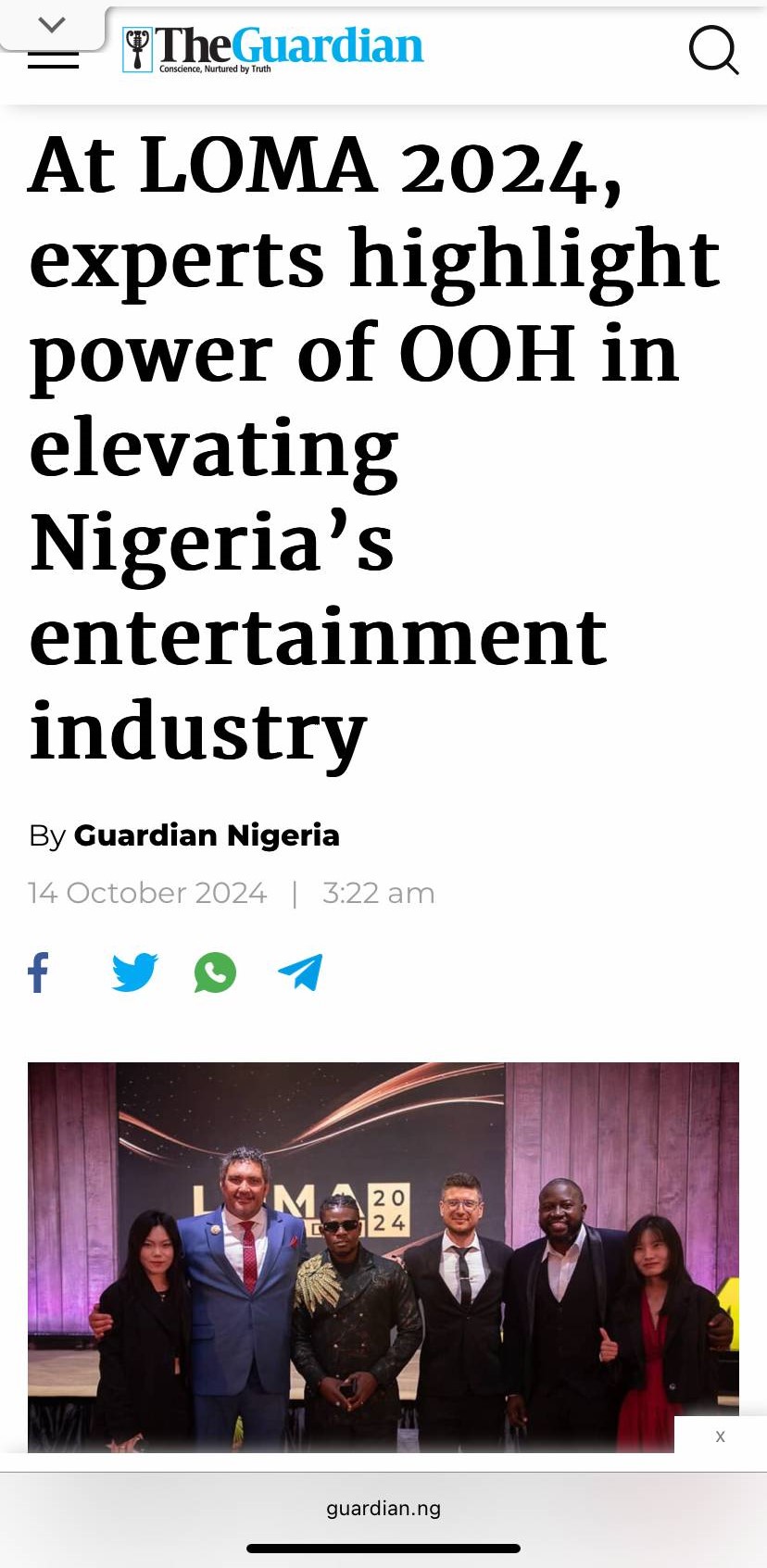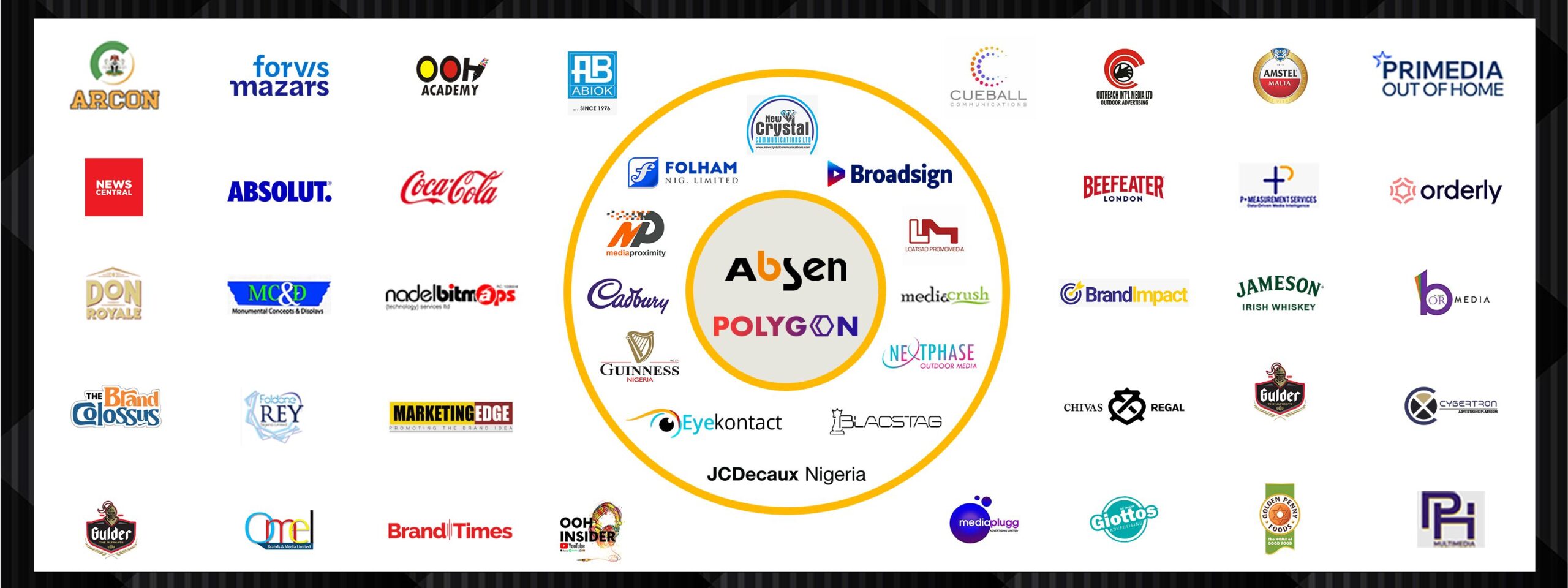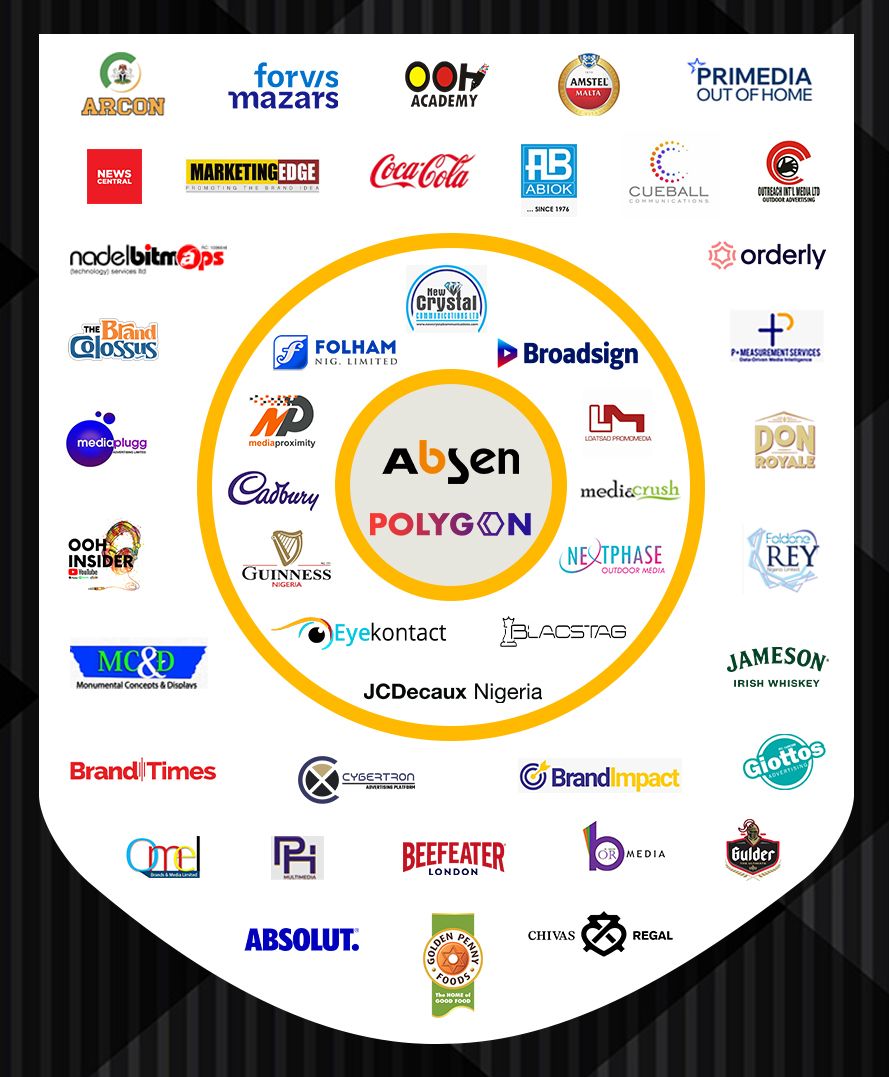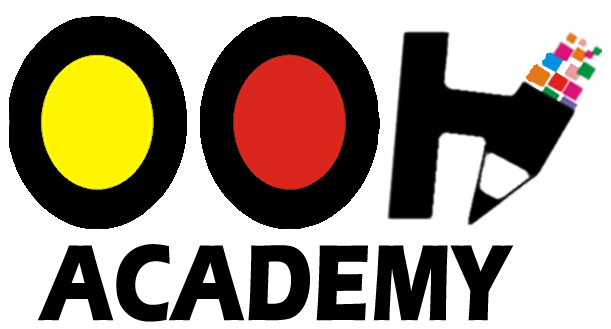| Innovative OOH Company of the year |
Originality – 30%
How novel and original is the company’s idea or approach? Does it represent a significant departure from existing products or services, or does it build on existing ideas in an innovative way?
Impact – 25%
What is the potential impact of the company’s innovation? Will it create new markets or disrupt existing ones? Will it lead to significant improvements in efficiency or quality of life for customers?
Execution – 20%
How well has the company executed on its innovative idea? Has it successfully brought its product or service to market, and does it have a viable business model?
Sustainability – 15%
Is the company’s innovation sustainable over the long-term? Does it address important social or environmental issues, or is it purely focused on generating profits?
Cultural and organizational factors – 10%
Does the company have a culture of innovation, and does it have the organizational structures and processes in place to support it?
|
Judges: 90% Public Votes:10% |
Media Owners Only |
|
| Programmatic DOOH Innovators |
Innovation, Creativity Market Impact and Influence – 40%
Did the campaign introduce new concepts or approaches within the industry?
Did the campaign set a precedent or influence future programmatic DOOH campaigns?
How did the campaign contribute to the growth of programmatic DOOH within the industry?
Technical Implementation – 20%
Use of advanced features (e.g., dynamic content, real-time data integration).
Campaign Effectiveness – 15%
What were the measurable outcomes of the campaign (e.g., engagement rates, conversion rates)?
Audience Targeting and Reach – 15%
How effectively did the campaign target its intended audience?
Client and Partner Feedback- 10%
What feedback did the client and any involved partners provide?
Were there testimonials or endorsements highlighting the campaign’s success?
|
Judges: 100% Public Votes:0% |
Media Owners, Media Independent Agency, Creative Agency, Adtech, Others |
|
| Agile in Digital OOH Implementation |
Speed – 55%
The ability to deploy DOOH campaigns quickly and efficiently is essential. The most agile DOOH operators are able to respond to changing market conditions, new opportunities, and emerging trends in real-time.
Flexibility – 15%
The ability to adapt to changing circumstances is critical. The most agile DOOH operators are able to modify their campaigns on the fly, adjusting to changes in weather, traffic, or other factors that may impact campaign performance.
Creativity – 5%
The most successful DOOH campaigns are those that are creative, engaging, and memorable. The most agile DOOH operators are able to be innovative in deployment that capture the attention of consumers and deliver measurable results e.g transitions
Data-Driven – 15%
The most agile DOOH operators are data-driven, using real-time data to optimize campaign performance and maximize ROI. This requires a deep understanding of the target audience, as well as the ability to collect and analyze data in real-time.
Technology – 10%
The most agile DOOH operators are also technology leaders, leveraging the latest technologies to create immersive, interactive experiences that drive engagement and deliver results. This may include augmented reality, facial recognition, or other cutting-edge technologies.
|
Judges: 40% Public Votes:60% |
Media Owners Only |
|
| Agile in Static OOH Implementation |
Speed – 25%
The ability to deploy billboards quickly and efficiently is essential. Look for companies or individuals who have a track record of fast deployment times.
Quality – 35%
While speed is important, the quality of the billboard deployment is equally crucial. Look for companies or individuals who can deliver high-quality deployments that are well-placed and visually appealing.
Flexibility – 10%
The ability to adapt to changing circumstances and requirements is essential in billboard deployment. Look for companies or individuals who are flexible and can handle unexpected challenges with ease.
Safety – 20%
Safety should always be a top priority when it comes to billboard deployment. Look for companies or individuals who prioritize safety and have a strong safety record.
Innovation – 10%
Finally, look for companies or individuals who are innovative and are continually looking for ways to improve their billboard deployment processes. This can help ensure that your billboard deployments remain efficient and effective over time.
|
Judges: 40% Public Votes:60% |
Media Owners Only |
|
| Use of Data and Insights |
Data Accuracy – 30%
The accuracy of the data presented is critical, as it ensures the audience can trust the information being presented.
Relevance – 30%
The data should be relevant to the audience and the message being conveyed. It should be targeted to the specific market segment, product, or service being promoted.
Clarity – 15%
The data presented should be clear and easy to understand. This includes using graphs, charts, and other visual aids to help the audience better comprehend the information being presented.
Insights – 25%
The data presented should provide insights that enable the audience to take action. This could include identifying trends, patterns, or opportunities in the market that the audience can capitalize on.
|
Judges: 75% Public Votes:25% |
Media Owners Only |
|
| Client Service Oriented |
Responsiveness -25%
A great media sales team should be responsive and available to their clients when they need them. This means they should be quick to respond to emails and phone calls and should always be ready to help with any questions or concerns.
Personalization – 15%
A strong media sales team should take the time to understand each client’s unique needs and tailor their approach to meet those needs. This requires a deep understanding of the client’s business, their goals, and their target audience.
Proactivity – 25%
The best media sales teams are proactive, meaning they anticipate their clients’ needs and come up with solutions before they are asked. They should be able to identify opportunities for their clients to reach their target audience and make recommendations accordingly.
Transparency -15%
A great media sales team should be transparent and honest with their clients. They should clearly communicate what they can and cannot deliver and should be upfront about any challenges or limitations.
Results-driven – 20%
Ultimately, a great media sales team should be focused on driving results for their clients. They should be able to demonstrate the effectiveness of their campaigns and provide clear metrics to show the return on investment.”
|
Judges: 40% Public Votes:60% |
Media Owners Only |
|
| The Rising Star |
Revenue Growth – 20%
Look at the company’s financials to determine their revenue growth over a specific period of time. This will give you a good idea of their overall growth trajectory.
Customer Base – 20%
Consider the size and diversity of the company’s customer base. A company with a larger customer base that spans multiple industries is likely to have experienced faster growth.
Market Share – 20%
Look at the company’s market share in the outdoor media industry. A company with a larger market share is likely to have experienced faster growth than its competitors.
Innovation – 20%
Consider how innovative the company has been in terms of its products and services. Companies that have introduced new and unique offerings to the market may be growing faster than those that are less innovative.
Employee Growth – 20%
Consider the company’s employee growth over a specific period of time. A company that has added a significant number of employees may be growing faster than its competitors.”
|
Judges: 90% Public Votes:10% |
Media Owners Only |
|
| OOH Company of the year |
Creativity -20%
Look for companies that have a proven track record of creating innovative and eye-catching outdoor advertising solutions.
Reach – 20%
Consider the company’s reach and coverage in terms of locations, types of media, and audience demographics. A good outdoor media company should be able to reach your target audience effectively.
Targeting – 15%
Consider how well the company can target specific audiences with its solutions/structures. A great outdoor media company will have the ability to customize Solutions to reach specific demographics, geographies, or interests.
Effectiveness – 15%
Look at the company’s past deployments and their effectiveness. Were they able to deliver results in terms of increased brand awareness, foot traffic, or sales?
ROI – 10%
Consider the company’s pricing and ROI (Return on Investment). You want to make sure that your investment in outdoor media is well-spent and that the company you choose can deliver a good ROI.
Customer Service – 20%
Consider the quality of customer service that the company provides. You want to work with a company that is responsive, professional, and dedicated to ensuring your satisfaction.”
|
Judges: 65% Public Votes:35% |
Media Owners Only |
|
| OOH Media Independent Agency of the Year |
Creativity and Innovation – 30%
The best outdoor media planning agency should have a team of creative professionals who can come up with innovative ideas for outdoor media campaigns. They should be able to think outside the box and create unique and engaging campaigns that capture the attention of the target audience.
Understanding of Target Audience – 20%
The agency should have a deep understanding of the target audience for the campaign. They should be able to research and analyze the demographics, psychographics, and behaviors of the target audience to create campaigns that resonate with them.
Media Planning and Buying – 15%
The agency should be skilled in media planning and buying, including identifying the best outdoor media channels and locations for the campaign, negotiating prices and contracts, and ensuring the campaign is delivered on time and within budget.
Measurement and Analytics – 20%
The best outdoor media planning agency should have a strong focus on measurement and analytics, including tracking the success of campaigns and using data to optimize future campaigns.
Relationships with Practitioners – 15%
The agency should have strong relationships with Practitioners and suppliers in the outdoor media industry, allowing them to negotiate better rates and secure the best placements for their clients.”
|
Judges: 85% Public Votes:15% |
Media Indepdent Agencies Only |
|
| OOH Creative Agency of the year |
Creative portfolio – 25%
Review the agency’s portfolio to assess the quality and creativity of their past work. Look for examples of outdoor designs and messaging within the period in view
Client testimonials – 10%
Check out the agency’s client testimonials to see what past clients have to say about their work. This can give you a good sense of the agency’s strengths and weaknesses.
Strategic approach – 30%
Look for an agency that takes a strategic approach to outdoor designs and messaging. The agency should be able to explain how they approach brief focusing on OOH on location basis
Innovation and technology – 15%
Find out if the agency is using the latest technology and techniques to create innovative and effective designs and messaging.
Communication and collaboration – 25%
Ensure the agency values clear communication and collaboration throughout the project, from initial consultation to final delivery. Collaboration with the OOH Planning agency to ensure messages are skewed to the right locations.”
|
Judges: 90% Public Votes:10% |
Creative Agencies Only |
|
| Excellence in OOH Print production |
Print Quality – 35%
Assess the overall quality of the printed materials, including clarity, color accuracy, resolution, and finish. High-quality printing contributes to the visual impact and durability of the campaign.
Speed of Production – 20%
evaluate the speed of production itself. Consider factors such as turnaround time, production capacity, and the ability to meet tight deadlines while maintaining quality standards.
Seam Quality -20%
Assess the quality of the seams where multiple flex materials are joined together. Look for seamless joins that maintain visual continuity without obvious gaps, wrinkles, or distortions. Seam strength and durability are also important considerations.
Material Selection – 15%
Consider the choice of materials used in the print production. Assess whether the materials are suitable for the intended application, durable, environmentally friendly, and contribute to the overall effectiveness of the campaign.
Sustainability and Eco-friendliness – 10%
Evaluate the commitment to sustainability and eco-friendliness in the print production process. Consider factors such as the use of recycled materials, eco-friendly inks, energy-efficient printing practices, and waste reduction initiatives.”
|
Judges: 40% Public Votes:60% |
Printers Only |
|
| Excellence in OOH Audit |
Data Accuracy and Precision – 35%
Assess the accuracy and precision of the data collected through auditing and monitoring activities. This includes the ability to capture relevant metrics such as audience impressions, reach, frequency, and engagement accurately.
Coverage and Scope – 15%
Evaluate the comprehensiveness and scope of the auditing process in capturing data across various OOH media formats, locations, and campaigns. Consider whether the auditing company provides comprehensive coverage that aligns with the client’s needs and objectives.
Technology and Innovation – 20%
Assess the use of technology and innovation in the auditing and monitoring process. Look for advancements such as digital tracking, GPS-enabled monitoring, data analytics, and real-time reporting capabilities that enhance the accuracy, efficiency, and reliability of the audit data.
Methodology and Standards – 15%
Evaluate the robustness of the auditing methodology and adherence to industry standards and best practices. Consider factors such as the transparency of data collection methods, compliance with industry guidelines, and the reliability of measurement techniques.
Actionable Insights and Reporting – 15%
Consider the ability of the auditing company to translate audit data into actionable insights and provide clear, concise reports to clients. Assess whether the reports are easy to understand, relevant to the client’s objectives, and facilitate informed decision-making.”
|
Judges: 80% Public Votes:20% |
Adtech |
|
| OOH Adtech Innovators |
Innovation and Technological Advancement – 30%
Evaluate how the solution leverages new technologies, offering advanced features that enhance OOH advertising capabilities (e.g., programmatic buying, AI, machine learning, AR/VR, Data Analysis)
Effectiveness and Performance – 25%
Assess the solution’s ability to deliver measurable results, such as improved targeting, increased engagement, higher ROI, and better campaign performance metrics.
User Experience and Interface – 20%
Consider the ease of use, intuitive interface, and overall user experience for both advertisers and operators. A solution that simplifies processes and enhances user satisfaction scores highly.
Integration and Compatibility – 15%
Evaluate the solution’s ability to integrate with existing systems, platforms, and technologies, ensuring seamless operations and maximizing utility without requiring extensive modifications.
Scalability and Flexibility – 10%
Assess the solution’s ability to scale across different environments and its flexibility to adapt to various campaign needs, locations, and formats.
|
Judges: 70% Public Votes:30% |
Adtech |
|

